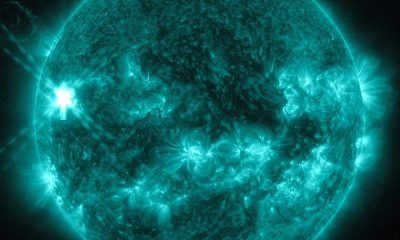
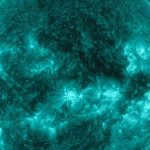
The solar system is home to a diverse range of objects. It can be challenging for newcomers to comprehend the vast array of conditions that exist within these space entities.
The population of the solar system
Approximately, the solar system consists of eight major planets and numerous smaller celestial bodies. The exact number of major planets has been a subject of debate for a considerable period. Astronomers have always had limited resources, although their capabilities have been steadily expanding.
In this illustration, upon careful observation, a question mark can be seen positioned within the orbit of the nearest planet to the Sun.
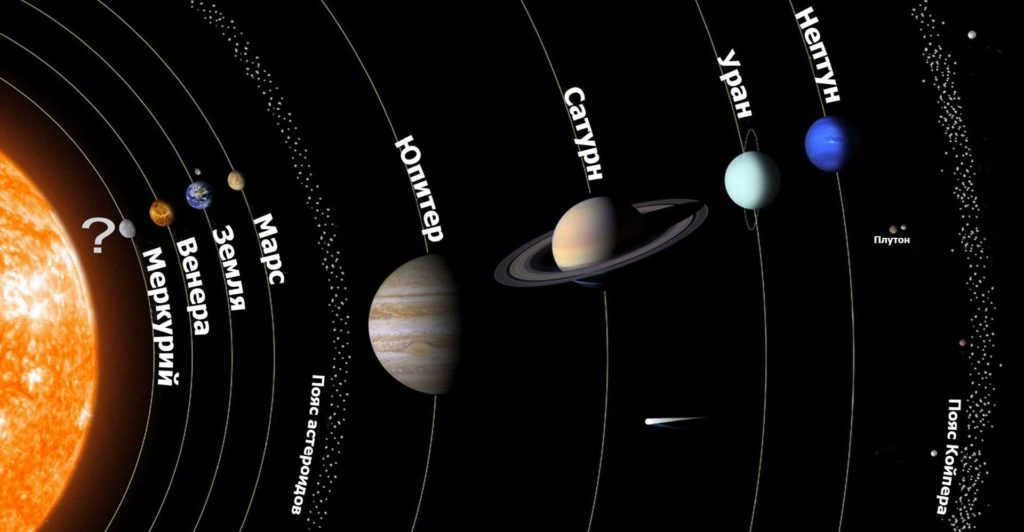
In general, it is worth considering the possibility of another unknown object on the outskirts of the solar system. For a long period of time, no evidence has been found to support this notion. Despite the theories suggesting that the solar system extends beyond the orbits of the eight known planets that have been recognized since the mid-19th century, the inner part of the solar system remains a mystery.
In the late 1990s, approximately three decades ago, the exploration and discovery of numerous objects on the outskirts commenced. This region is commonly referred to as the Kuiper Belt, although historically it would be more precise to assign it an alternative name. However, due to the influence of an American astronomer who initially disputed the existence of objects in this area, we continue to use his name to identify it. Presently, we have identified thousands of captivating objects within this region.
The dimensions of objects
What presents a challenge for astronomers and enthusiasts alike is the exploration of celestial bodies, such as planets, moons, and the entire solar system. Take a glance at this image.

When looking at objects in a book or on a computer screen, we often see them depicted at the same size. This is due to the limitations of the medium, such as the size of the page or screen. Unfortunately, in this particular astronomy textbook, the author attempted to represent the vast diversity of cosmic objects in the solar system by scaling them all to the same size. However, it is clear that these objects are actually quite different in size and appearance.
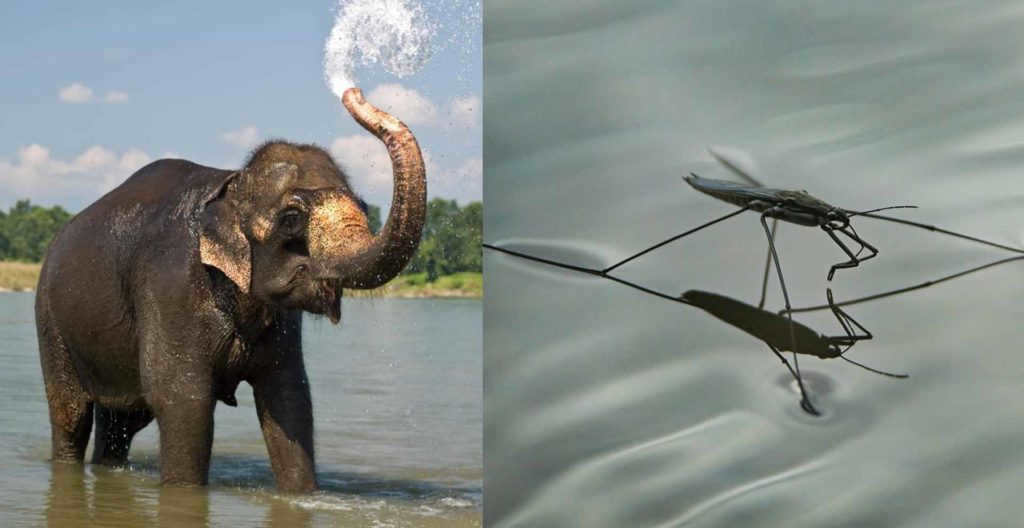
An elephant weighs approximately five tons, while a water viper weighs only 50 milligrams. This means that their mass ratio is 1 to 100 million. Interestingly, the Sun and the Moon also have the same mass ratio, and in astronomy textbooks, they appear similar in pictures.
However, physicists are well aware of the stark differences in the processes occurring within these celestial bodies. The Moon, for example, is an inert and lifeless object. There are no earthquakes or mountain formations, as it has long cooled down. On the other hand, the Sun is a plasma ball that undergoes thermonuclear reactions.
For beginners, it can be challenging to comprehend the vast range of conditions present in cosmic objects. While many of these objects may appear spherical in shape, their physics, processes, and even life can vary greatly, much like the difference between an elephant and a water vole.
This is a more accurate representation of our solar system.
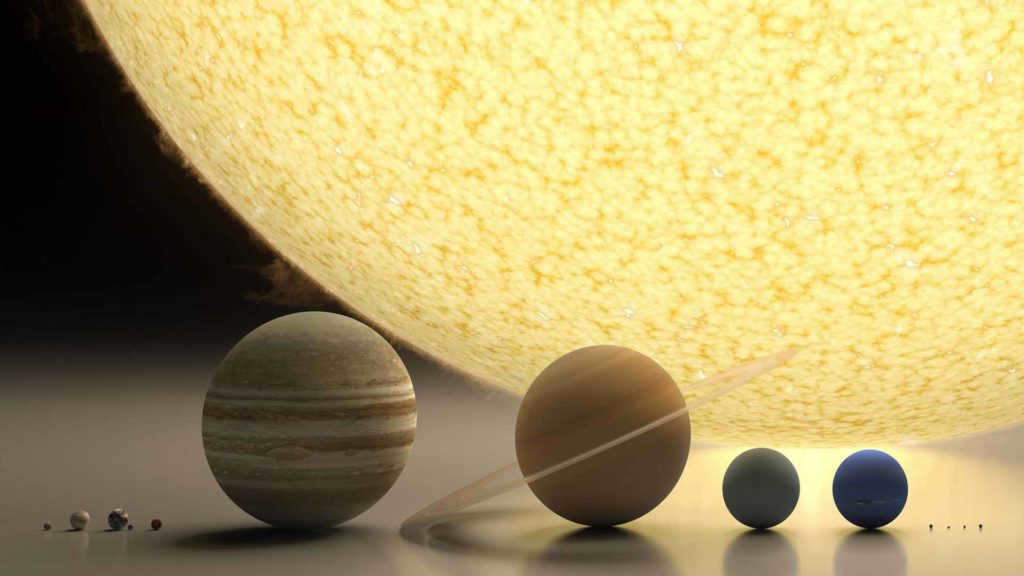
- The sun
- The inner planets
- Mercury
- Venus
- Earth
- Mars
- Jupiter
- Saturn
- Uranus
- Neptune
- Pluto
- Haumea
- Makemake
- Erida
These images demonstrate the incredible diversity of objects within our solar system. Earth stands out as a truly unique planet, the only one capable of supporting life due to its biosphere. It is fascinating to consider why Earth possesses the necessary conditions for life while other planets do not. This highlights the limited range of natural conditions that are conducive to the development of life.
Pluto is no longer classified as a traditional planet, but in 2006 it was designated as a member of a newly formed category. It became the representative of a distinct group known as Dwarf Planets, which are similar to planets but do not meet the size requirements of the other eight. The provided image effectively illustrates the relative sizes of these objects. Understanding the physics involved requires one to rely on their existing knowledge, as it is also quite distinct.
What can you see with a telescope?
Until recently, astronomers were limited to observing planets through a telescope, but the images often didn’t provide enough information about the planets’ nature. However, when it comes to the Moon, which is relatively close to Earth, we’re able to see details on its surface. So, what exactly can astronomers see from our planet’s surface using a telescope?
Typically, the atmosphere’s turbulence and constantly moving air currents can cause the images seen through a telescope to appear blurry, with an angular resolution of a few seconds of arc. Under optimal conditions, at the best observatories in the world, a blur size of 1 arc second is considered achievable.
- Linear resolution on the surface of planets when observed from Earth with an angular resolution of 1″ (one arc second):
- Moon – 2 km
- Mars – 270 km
- Jupiter – 3,000 km
How much is 1″ (one angular second) on the planets’ surface? If you are an observer on the Moon’s surface looking towards the Earth, 1″ represents a distance of two kilometers.
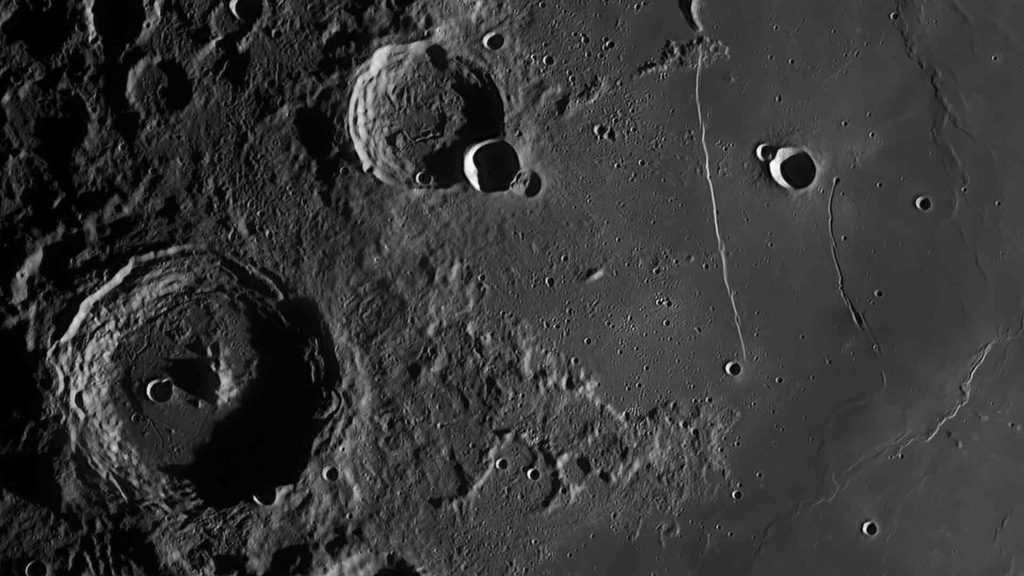
In this seemingly stunning image of the Moon, we are unable to make out any features smaller than two kilometers, only those that are larger. We will never be able to spot any spacecrafts resting on the lunar surface or astronauts strolling about with the aid of Earth’s telescope.
In other instances, it’s simply a predicament! We can only observe objects larger than 300 kilometers on the surface of Mars, and on Jupiter, it’s a whopping 3 thousand kilometers. As for Pluto, which is 10 times smaller in size, we can only perceive objects larger than 30 thousand kilometers, meaning that when astronomers observe it through a telescope from Earth, they have never witnessed any details whatsoever on its surface.
This is one of the finest images of Jupiter captured from the Earth’s surface.
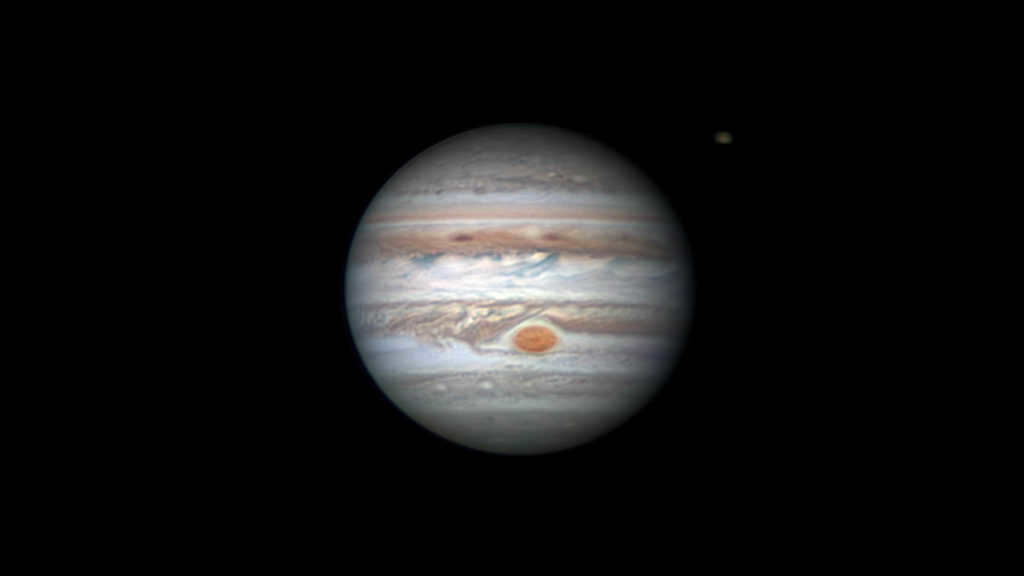

This is the best view you can get of Jupiter using a regular telescope from the surface of the Earth. However, it only shows some colored stripes that indicate different molecular compositions in the atmosphere. The clouds and layers of clouds appear in different colors, but there are no distinct features and it’s hard to track changes in the atmosphere.
Now, let’s compare this with an image of Jupiter taken up close by a space probe.
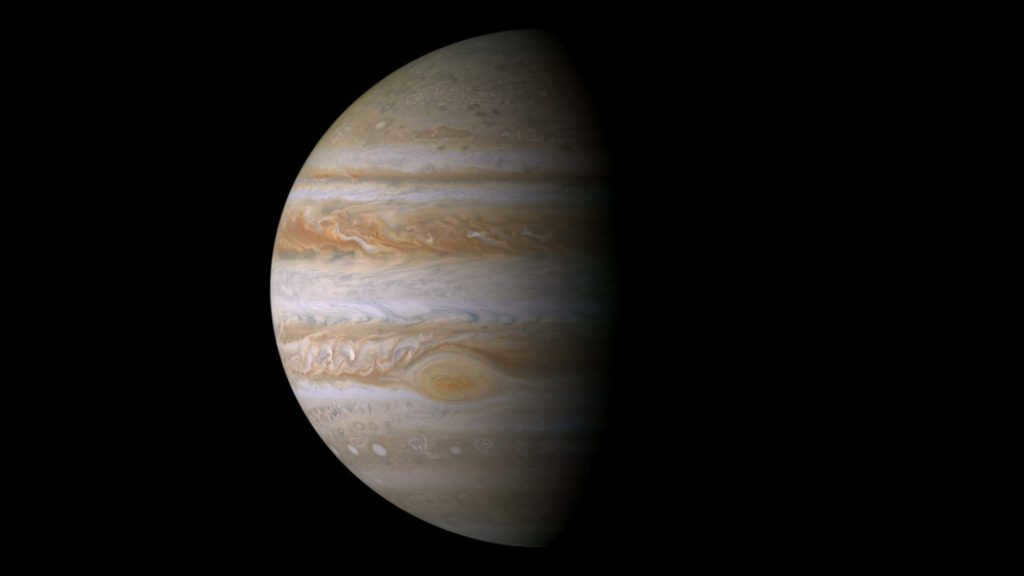
A compilation of 27 photographs taken by the narrow-angle camera on NASA’s Cassini spacecraft on December 29, 2000, reveals a stunning color mosaic of Jupiter. These images were captured when the spacecraft was approximately 10 million kilometers away from the planet. The smallest discernible objects in the mosaic measure around 60 kilometers in diameter. For more information, visit NASA’s official website.
For those who delve into the study of Jupiter’s atmosphere, this image presents a completely different perspective. The intricate details become immediately apparent upon closer examination. Of particular interest are the elongated spots that indicate cyclonic movement. Enthusiasts of astronomy may recall the term “Great Red Spot” from their childhood readings.
It’s an incredible sight that can be observed from the surface of our planet through a telescope, even though its true nature remained a mystery for a long time. After the space probes passed by, it was revealed to be an enormous cyclone. This phenomenon had been noticed around 300 or 350 years ago, puzzling the early astronomers and Galileo’s early telescope enthusiasts. However, modern knowledge has finally identified it as a cyclone.
Objects of smaller size
Studying the solar system presents challenges as we are situated within it and it encompasses our surroundings. To comprehensively analyze its composition, it is necessary to observe the entire expanse of the sky from multiple vantage points. Only a select few telescopes possess the capability to observe extensive portions of the sky simultaneously. Until recently, there were only a limited number of telescopes worldwide with this capability.
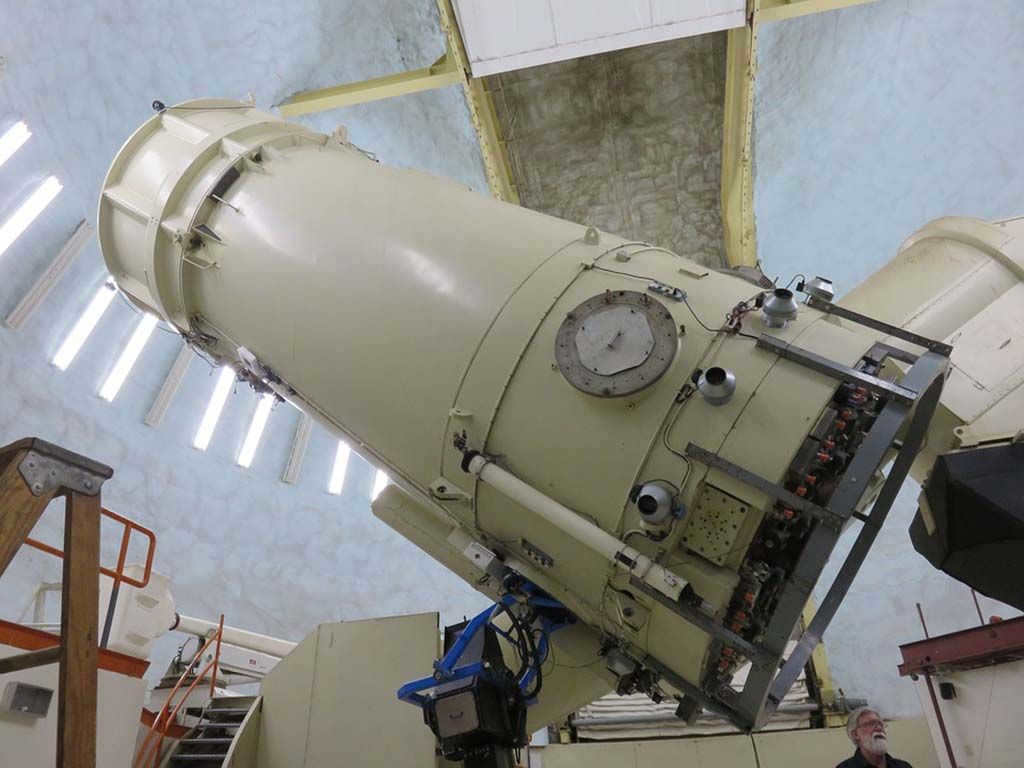
This image depicts one of the survey telescopes known as the Schmidt camera system. At first glance, it may not seem like a giant or particularly unique, but it offers a remarkably wide viewing angle. These telescopes have provided us with invaluable insights into the composition of our solar system. Progress in this field was initially slow until the advent of electronic light receivers, specifically CCDs. These devices allow for the immediate transfer of images to a computer, enabling quick and efficient analysis.
Below are the statistics regarding the discovery of objects within our solar system.
Once photographic plates were employed, the rate at which objects were unearthed grew at a sluggish pace. However, after 2000, the majority of astronomers transitioned to electronic CCD light receivers. Utilizing a computer, they were able to swiftly compare images and detect objects in motion. While many of these objects are diminutive, measuring just kilometers or tens of kilometers, there are also those that span hundreds of kilometers.
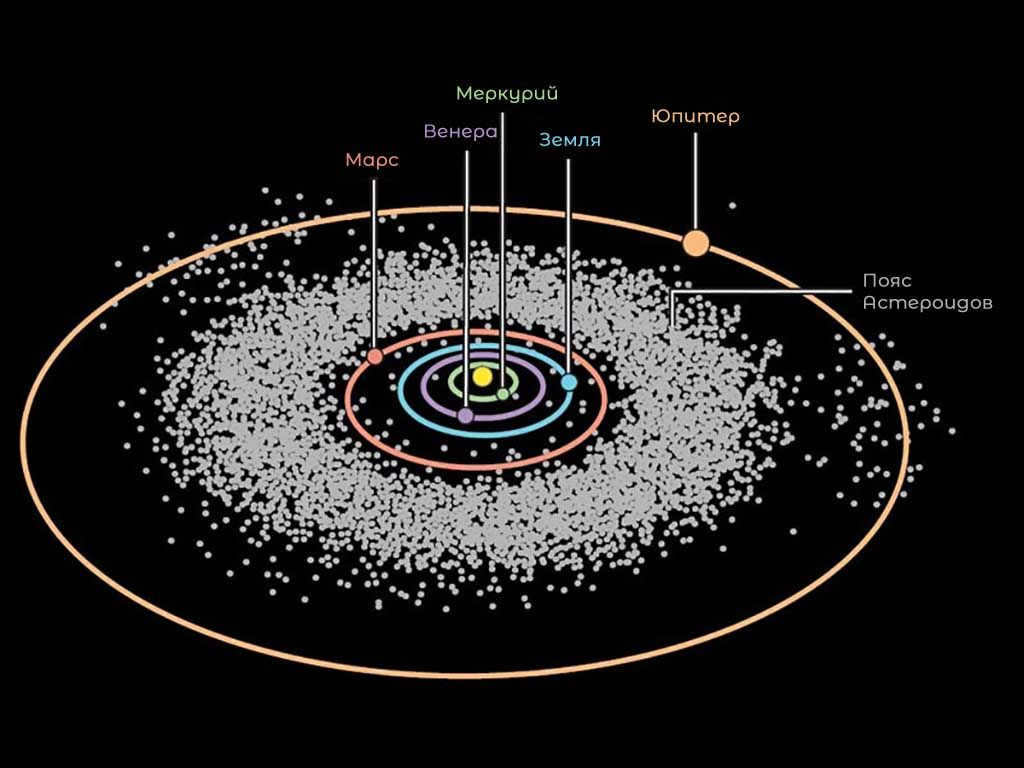
The majority of these entities exist within the Main Asteroid Belt, which lies between the orbits of Mars and Jupiter. This is the region where astronomers initially anticipated the presence of a planet. When we examine the distribution of planetary orbits, we observe a significant gap between Mars and Jupiter, devoid of planets but filled with numerous small asteroids. The reason behind this phenomenon remains somewhat unclear.
We can attribute this to the influence of the colossal Jupiter, whose gravitational pull likely hindered the aggregation of these materials, preventing the formation of a separate planet. If we were to combine the mass of all the objects in the Asteroid Belt, the resulting body would be minuscule, smaller than our Moon. Consequently, there is insufficient substance to substantiate the existence of a planet that was never conceived!
Comets
Comets are celestial bodies that orbit the Sun and are made up of ice, dust, and rock. These icy objects originate in the outer regions of the solar system, such as the Kuiper Belt and the Oort Cloud. As they approach the Sun, the heat causes the ice to vaporize, creating a glowing coma around the nucleus of the comet. This glowing coma, along with the solar wind, pushes against the dust and gas, creating a tail that points away from the Sun. Comets have been observed for centuries and have fascinated astronomers and scientists due to their unique composition and behavior. For example, the famous Halley’s Comet is visible from Earth approximately every 76 years. Comets provide valuable information about the early solar system and the formation of planets. Studying comets can help scientists understand the origins of water and organic molecules on Earth.
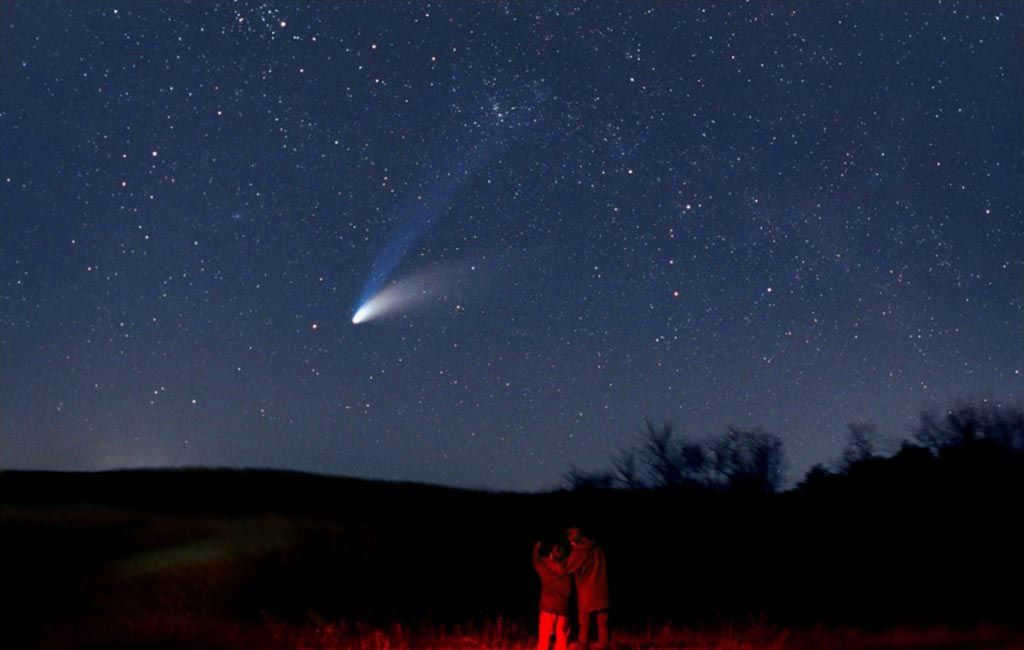
Emerging from the Kuiper Belt and journeying towards Earth, we encounter the awe-inspiring entities known as Comets. These celestial objects, composed of icy asteroids, infrequently venture into the inner regions of the solar system and rarely come into close proximity with the Sun. As they draw nearer to our star, they experience a rise in temperature, causing them to shed their material at a rapid pace. The ice begins to melt, transforming into vapor, and a cloud forms around the comet. This cloud, influenced by the Sun’s rays and plasma, extends outwards, taking on the appearance of a tail.
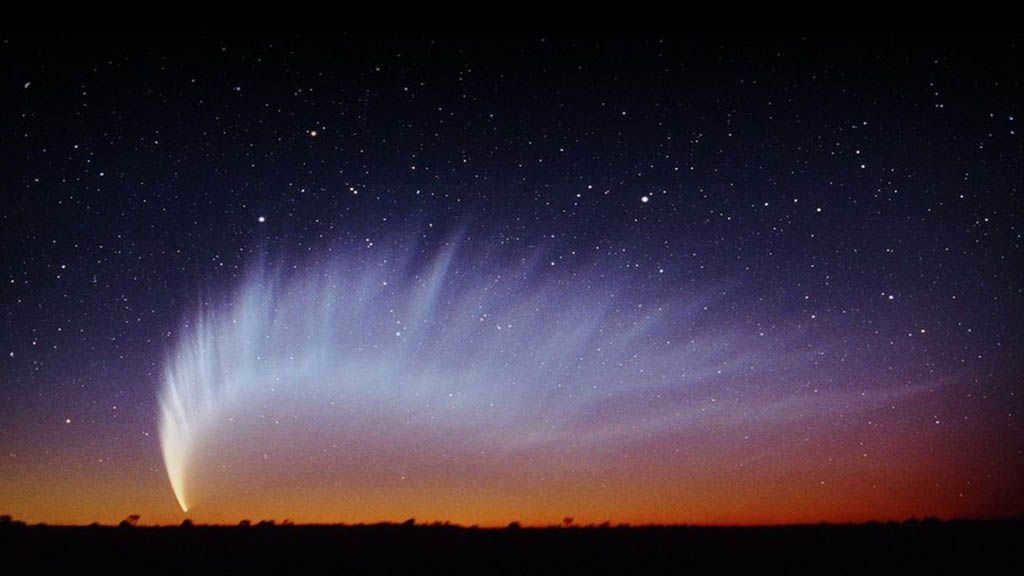
Comets captivate our attention due to the ancient composition of their materials. Unlike asteroids that come close to the Sun and get cooked by its intense heat, comets bring us remnants of the ancient solar system from distant locations. These comets release their ancient materials here on Earth, allowing us to study them as valuable relics.
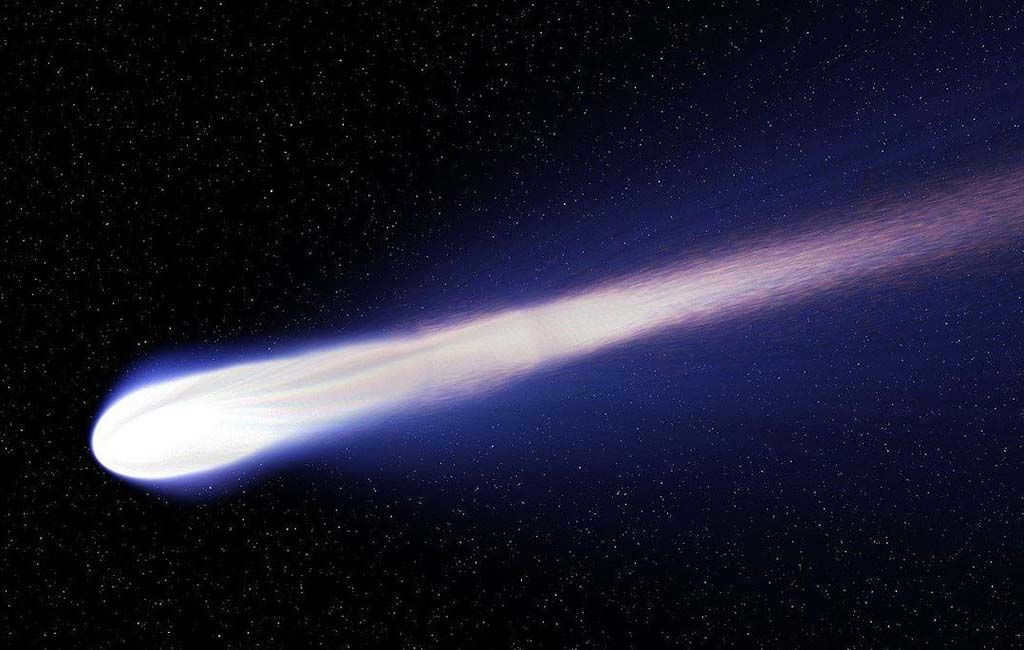
A comet consists of an icy core, known as a nucleus, as well as gases and dust. Typically, the gas tail of a comet appears bluish, while the dust tail has a slightly reddish hue. These gases and dust particles are pushed away from the comet by sunlight, solar plasma, and are left trailing behind.
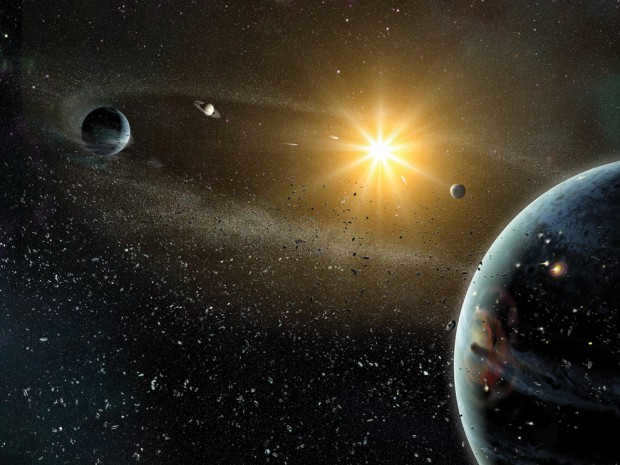

Other Greek thinkers created their own versions of such catalogs – for instance, one of them was the work titled “A Collection, or List of the Wonders of the Whole Earth” by the poet and bibliographer Callimachus of Cyrene (Καλλλίμαχος). Regrettably, the exact contents of his manuscript remain unknown, as no surviving copies of it exist – most likely the original and any copies (if they ever existed) were destroyed in the fire that consumed the Library of Alexandria.
Lists compiled by ancient and medieval writers typically encompassed man-made objects, but nowadays natural phenomena like the Grand Canyon, Mount Everest, the Great Barrier Reef, and Victoria Falls are gaining popularity – feel free to contribute your own versions of the most captivating sights on our planet to this list.
Many astronomers, astronauts, science fiction writers, and artists have attempted to answer the question: “What will future intergalactic tourists see on postcards and in guidebooks hundreds of years from now?”. The list of suggested marvels includes over seventy objects and phenomena, and we invite you to explore the ranking of the most popular ones.
1. The Rings of Saturn
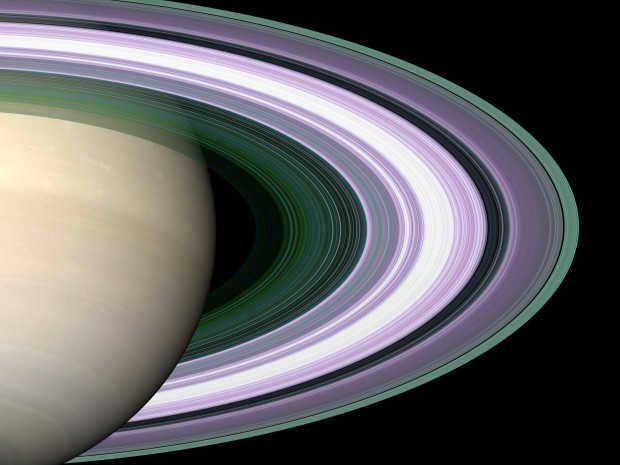
The rings of Saturn hold the top spot as the most fascinating wonders of the solar system. These flat concentric formations surrounding the sixth planet have captivated the minds of scientists and amateur astronomers for over a century. There are multiple hypotheses attempting to explain their origin, but science fiction writer Ben Bova summarized humanity’s fascination with Saturn’s rings best: “They are both beautiful and enigmatic.”
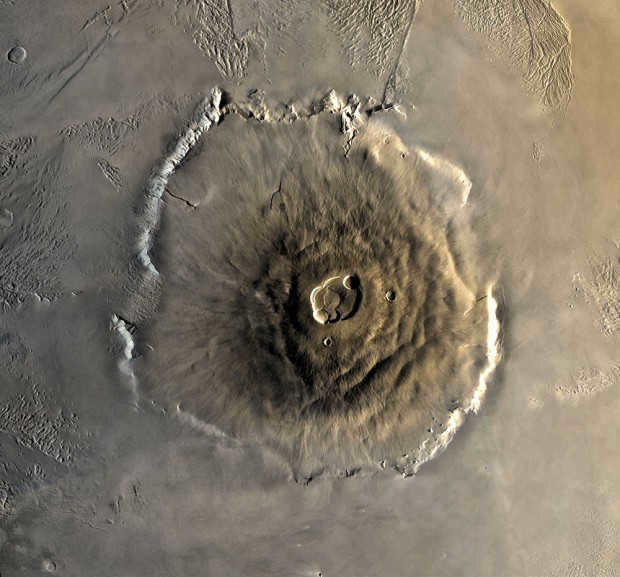
The second place was rightfully taken by Olympus, a colossal extinct volcano. This magnificent mountain is not only the highest known peak in the entire solar system, but it also resides on the Red Planet, which, in comparison to massive giants like Jupiter or Saturn, is relatively small. Olympus stands tall at a staggering height of 21.2 km from its base, earning its name after the legendary dwelling of the Greek gods. To put this into perspective, it is more than twice the height of Earth’s tallest volcano, Mauna Kea, which measures 10.2 km from its base. “Olympus is the only mountain we are aware of that literally breaches the atmosphere of its planet,” commented Dan Durda of the Southwest Research Institute (San Antonio, Texas).
3- Jupiter’s Amazing Feature: The Great Red Spot
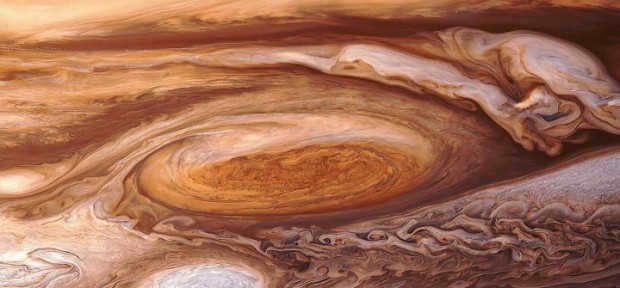
Astronomers have been observing this unique atmospheric phenomenon for over 350 years. Its dimensions are incredibly massive compared to Earth’s standards, measuring between 24,000 to 40,000 kilometers in width and 12,000 to 14,000 kilometers in length, making it significantly larger than our own planet. In reality, the Great Red Spot is an immense hurricane-anticyclone, and it holds the title as the largest atmospheric feature of its kind in our entire solar system.
4. Mariner Valleys, Mars
The fourth incredible place on our list is the Mariner Valleys on Mars. These valleys are the largest known canyons in the solar system and are estimated to be about 4 billion years old. They stretch for about 4,000 kilometers and reach depths of up to 7 kilometers. The Mariner Valleys were likely formed by a combination of tectonic activity and erosion from ancient rivers. This breathtaking landscape offers a glimpse into the geological history of Mars and is a fascinating destination for future exploration.
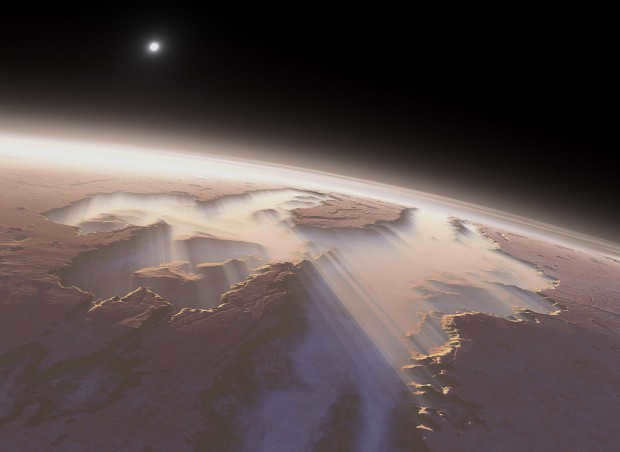
When compared to the Mariner 9 spacecraft’s Martian canyon system, which was revealed to Earth astronomers through images, the American Grand Canyon appears to be a small gorge. The dimensions of the Valleys are truly astounding – their length measures 4.5 thousand kilometers, width 200 km, and depth reaches 11 km. In comparison, one of the main attractions in the United States measures 446 km in length, 29 km in width, and 1.8 km in depth. It is conceivable that if Americans were to land on the Red Planet, they would immediately set up a cash register near the Martian wonder to collect fees from tourists who wish to visit the Mariner Valleys.
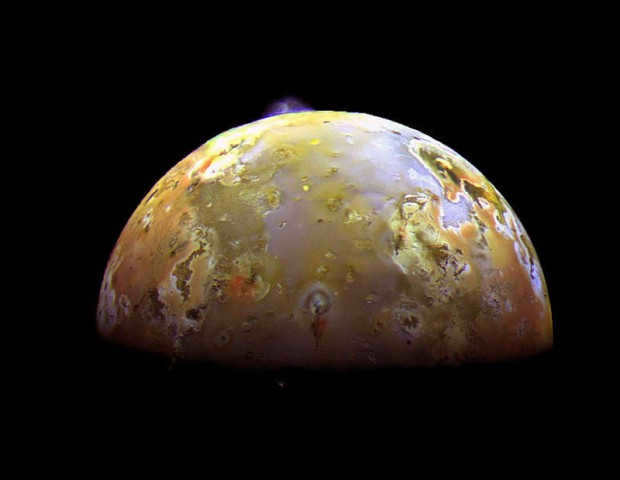
According to astronomers, Io is recognized as the most dynamically active celestial object in our solar system: it possesses approximately 400 active volcanoes, with the highly active super-volcano Pele being the most prominent. Pele is surrounded by an immense ring composed of sulfur compounds and other byproducts of its volcanic activity, measuring a height of 300 km and a diameter of around 1.2 thousand km.
Determining the top five attractions was relatively straightforward, as they stood out significantly from the rest. However, the remaining positions in the ranking are not as clear-cut. While there are no definitive winners among the contenders, it is worth mentioning the following phenomena:
6. Frozen summits of Callisto
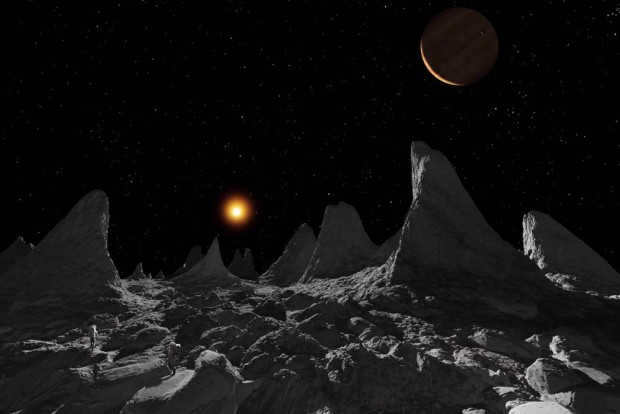
When it comes to the quantity of impact craters, Callisto holds the title as the frontrunner among all celestial bodies in the solar system. Moreover, the icy formations on Jupiter’s moon, which were documented by the Galileo spacecraft, are unparalleled – no similar discoveries have been made on any other cosmic entity within our planetary system.
7. The Verona Escarpment
The Verona Escarpment is a geological formation located in Verona, Italy. It is characterized by its steep cliffs and rocky terrain. The escarpment offers stunning views of the surrounding countryside and is a popular destination for hikers and nature enthusiasts.
One of the unique features of the Verona Escarpment is its diverse flora and fauna. The rocky cliffs provide a habitat for a variety of plant species, including rare orchids and mosses. The escarpment is also home to several bird species, making it a haven for birdwatchers.
In addition to its natural beauty, the Verona Escarpment has historical significance. It is believed to have been formed millions of years ago during the Ice Age, and evidence of human settlements dating back to the Neolithic period has been found in the area.
Visitors to the Verona Escarpment can explore its many hiking trails, which offer breathtaking views of the surrounding landscape. The trails range in difficulty, making them suitable for both beginners and experienced hikers. Along the way, hikers can discover hidden caves and rock formations, adding to the sense of adventure.
Whether you are a nature lover, history enthusiast, or simply looking for a new outdoor adventure, the Verona Escarpment offers something for everyone. Its unique geological features, diverse flora and fauna, and rich history make it a must-visit destination in Verona.
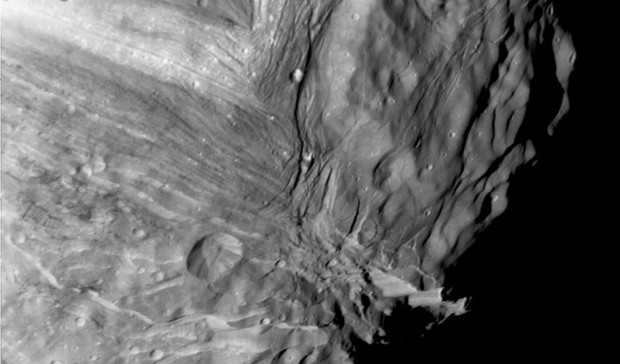
An enormous boulder exists on Miranda, a satellite of Uranus. In comparison to the minuscule dimensions of the moon, the height of this cliff is astonishing, reaching anywhere from 5 km to 20 km, which is approximately 3% of Miranda’s diameter.
8. Experiencing Sunrises and Sunsets on Mercury
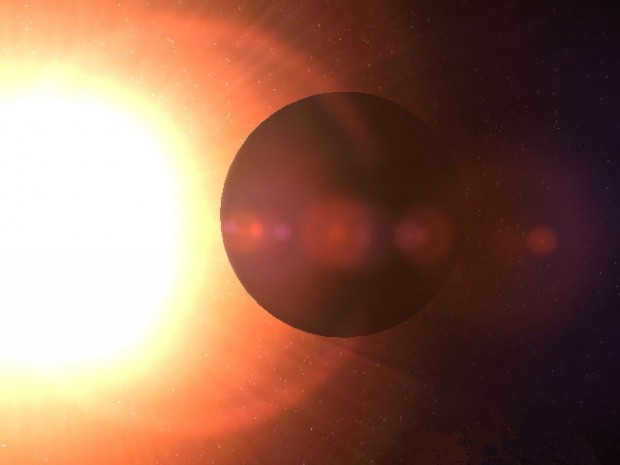
Mercury’s unique orbital motion gives rise to an intriguing astronomical phenomenon where, at specific times, the Sun appears to halt its movement and reverse direction in the sky. This creates a fascinating spectacle of double sunrises and sunsets over the planet, which is commonly referred to as the Joshua effect.
9. Japhet Mountain Ring
The Japhet Mountain Ring is a unique piece of jewelry that is inspired by the beauty and majesty of mountains. This stunning ring features a delicate design that resembles the peaks and valleys of a mountain range.
Crafted from high-quality materials, the Japhet Mountain Ring is both durable and stylish. The ring is available in a variety of sizes and can be customized to fit your finger perfectly.
Wearing the Japhet Mountain Ring is a reminder of the strength and resilience found in nature. It serves as a symbol of overcoming challenges and reaching new heights. Whether you are an outdoor enthusiast or simply appreciate the beauty of nature, this ring is the perfect accessory for you.
Add a touch of elegance and adventure to your style with the Japhet Mountain Ring. Order yours today and embark on a journey of style and exploration.
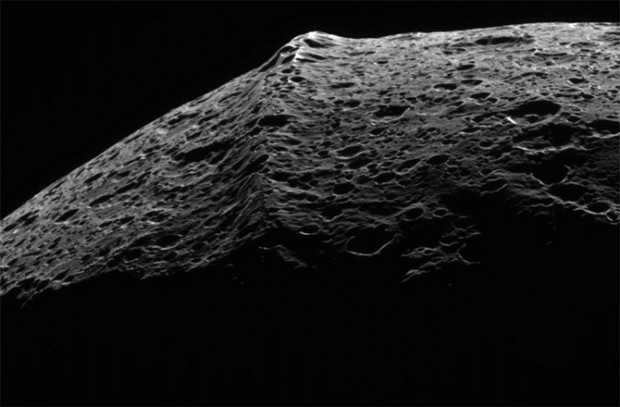
Scientists are still uncertain about the origin of the enormous mountain range that encircles the equator of Saturn’s moon, Iapetus.
10. Hector, the Asteroid
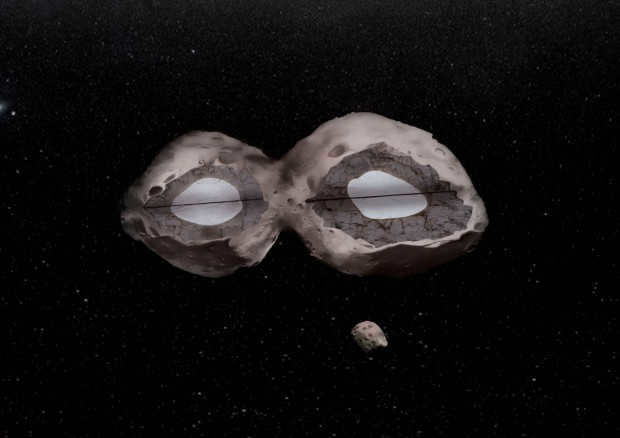
A distinct celestial object, one of the biggest asteroids in the entire solar system.
11. The Crater of Herschel
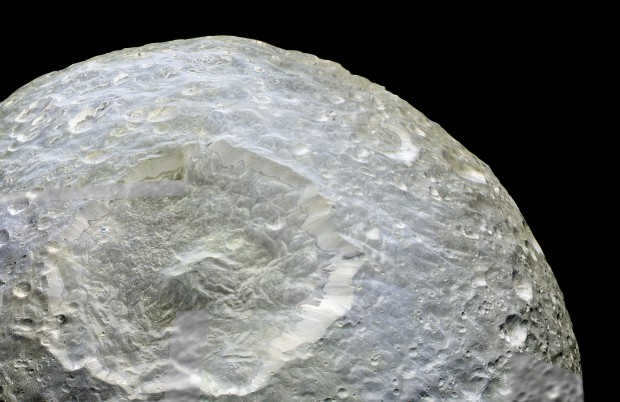
The impact crater on Mimas, one of Saturn’s moons, is incredibly large compared to the size of the moon itself. Herschel, the diameter of the crater, is one-fifth the diameter of Mimas.
12. The methane lakes of Titan
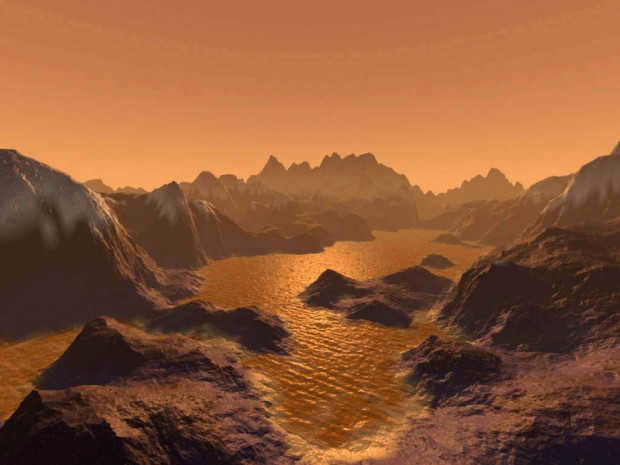
Titan, the largest moon of Saturn, is currently regarded as the second celestial body in the solar system, after Earth, to possess liquid on its surface.
13. Geysers on Enceladus
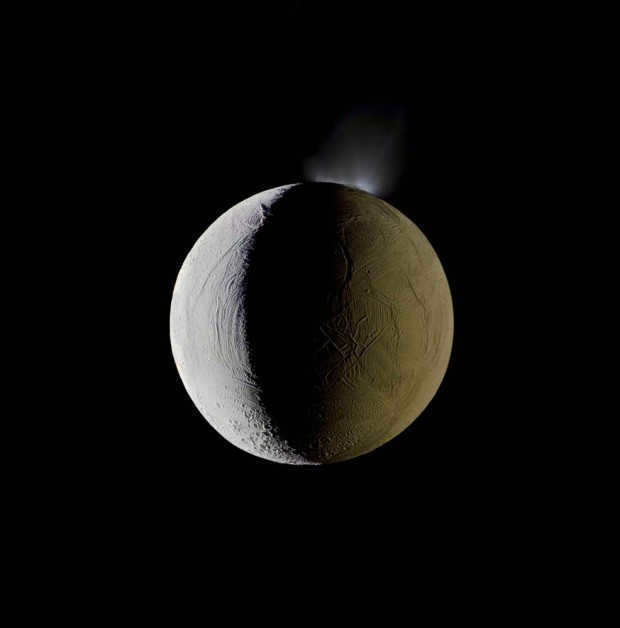
The ice geysers expel water vapor and particles to heights of several hundred kilometers. The atmosphere of Saturn’s moon is in a constant state of escape due to the incredibly weak gravitational force, but the geysers provide significant support, resulting in the density remaining relatively stable.
This year, humanity achieved the remarkable feat of successfully landing on its inaugural comet, while simultaneously witnessing the groundbreaking birth of a baby by a woman with a transplanted uterus. In another awe-inspiring discovery, fossilized seashells have profoundly challenged our preconceived notions about human culture, prompting a complete reevaluation of our understanding. These are but a handful of the momentous scientific advancements detailed below. 1. In 2007, a team of archaeologists meticulously analyzed fossilized shells within a museum collection, and to their astonishment, stumbled upon a previously overlooked detail: intricate engravings adorning the shells in the form of abstract patterns. Remarkably, these shells were found to be of considerable antiquity, thus reshaping our understanding of human artistic expression…
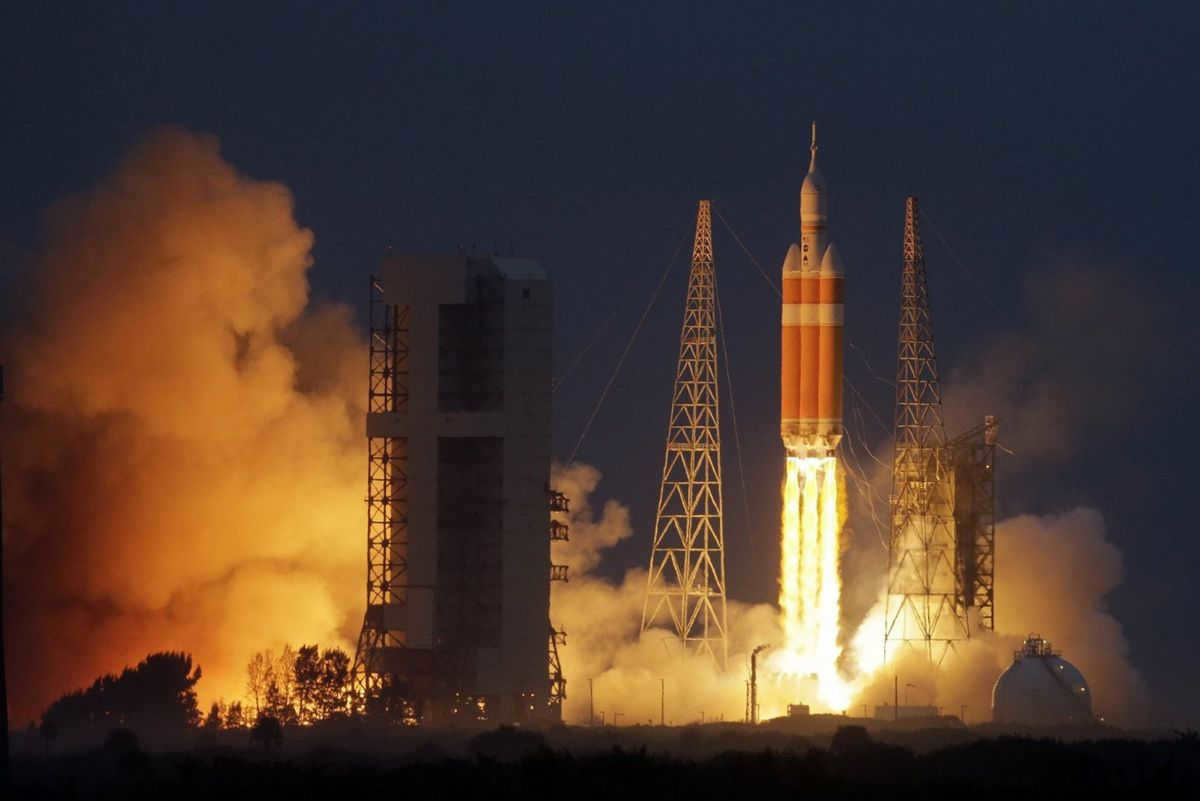
The ALMA (Atacama Large Millimeter/submillimeter Array) is a collection of advanced radio telescopes situated in northern Chile. The ALMA complex is situated on the Chajnantor Plateau, which is located at an impressive altitude of 5,000 meters, surpassing many objects in the troposphere. ALMA, which stands for “soul,” not only serves as the world’s most powerful radio telescope array but also functions as a time machine. By observing celestial bodies, ALMA enables scientists to investigate and validate existing theories concerning the formation of the universe approximately 13 billion years ago. Additionally, ALMA propels us into the future as it aids in the discovery of new cosmic phenomena and expands our understanding of the cosmos. Read more…
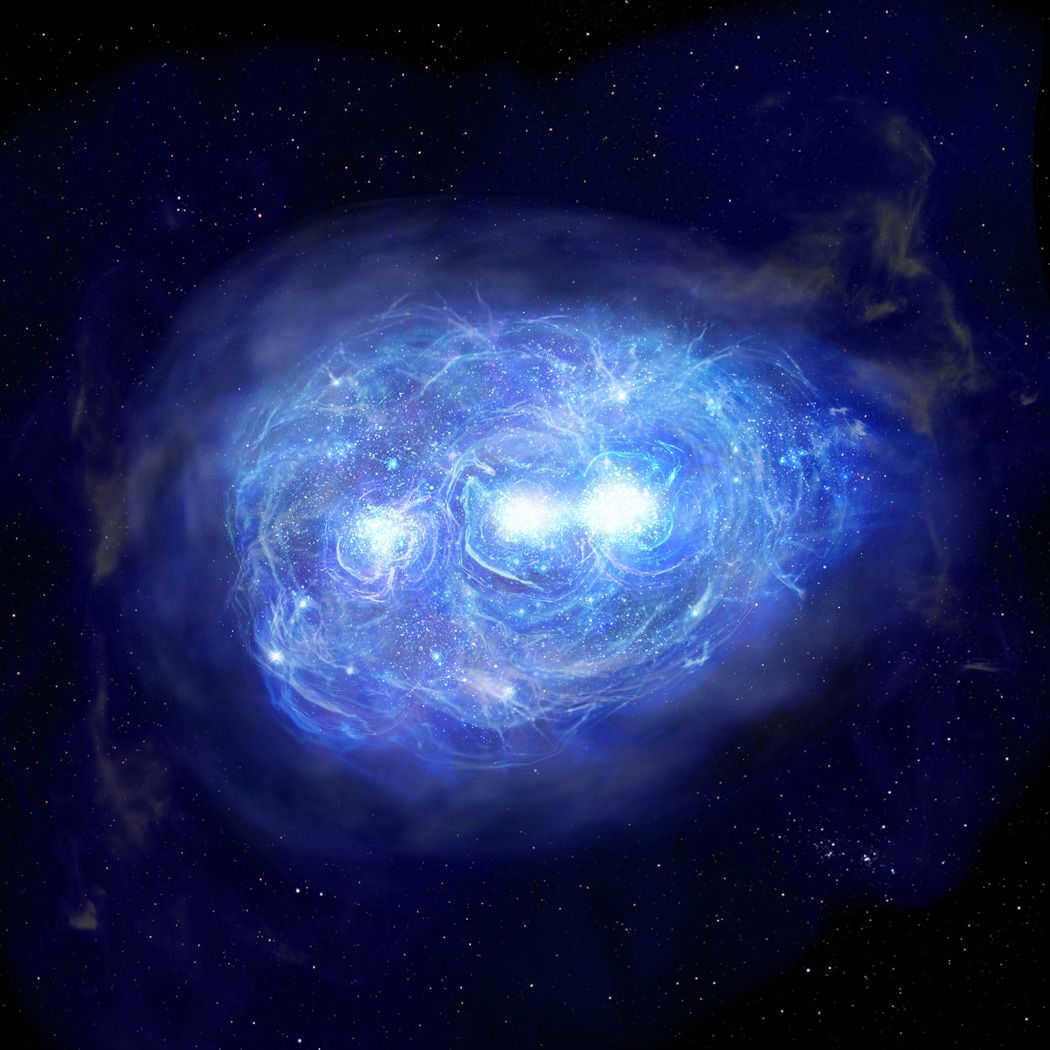
There is a belief that the United States made a total of 6 visits to the Moon between 1969 and 1972, with 12 astronauts landing on its surface. However, even today, there are still some who argue that the American Moon landing was a massive hoax. Let’s delve into this complex question. In 1974, American author Bill Keising published the book “We Never Flew to the Moon,” which marked the beginning of the widespread “lunar conspiracy” theory. Keising had valid reasons to bring up this topic, so… Read more….
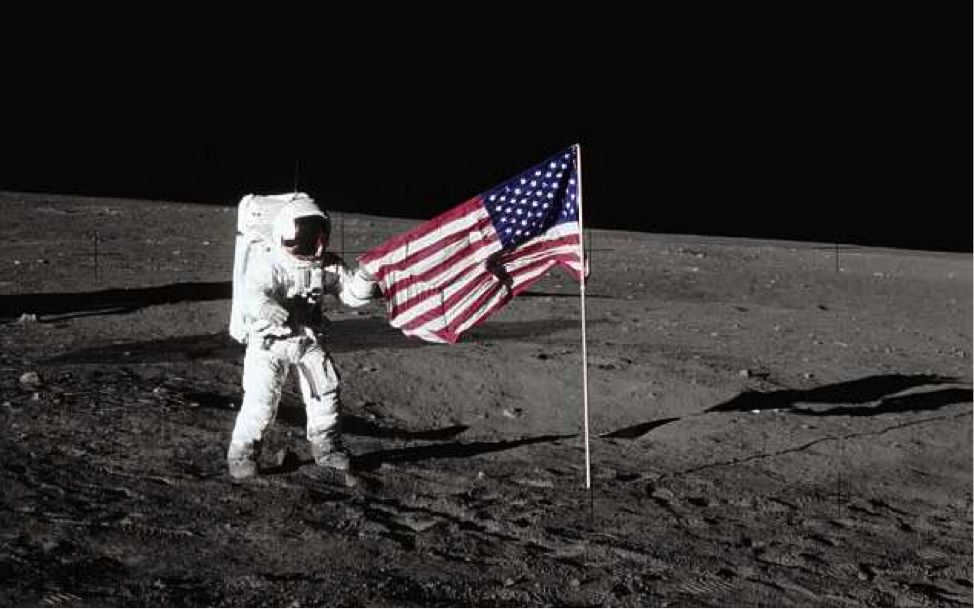
Vitaly Lopota, the vice-president of the United Rocket and Space Corporation (ORKK), recently stated in an interview with Rossiyskaya Gazeta that the Moon remains out of reach for us at the moment. In order to successfully land a crew of three people on the lunar surface, we would require a rocket with a payload capacity of at least 130-150 tons to reach the lower orbit. Unfortunately, such carriers do not currently exist. The available carriers are insufficient for this task,” Lopota explained. ORKK is currently focused on developing rockets with a payload capacity of 20 tons in the lower orbit, with plans to eventually reach 25 tons in the near future. Despite the challenges, the quest to explore the Moon continues.
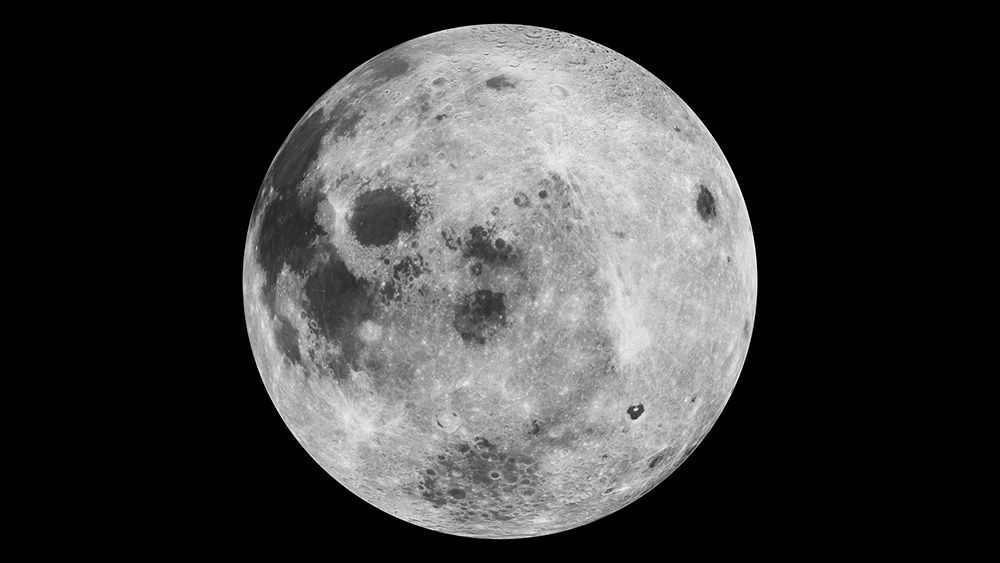
The recent release of Christopher Nolan’s film “Interstellar” has sparked intense discussions on the internet. This movie, which portrays a dying Earth and a space voyage, has divided audiences. Some hail it as the best film of the decade, while others vehemently criticize the director’s mistakes. However, both supporters and detractors agree on one thing: space is an incredibly perilous environment, and there are numerous ways to meet one’s demise there. The following are some of these dangers. 1…. Read more…
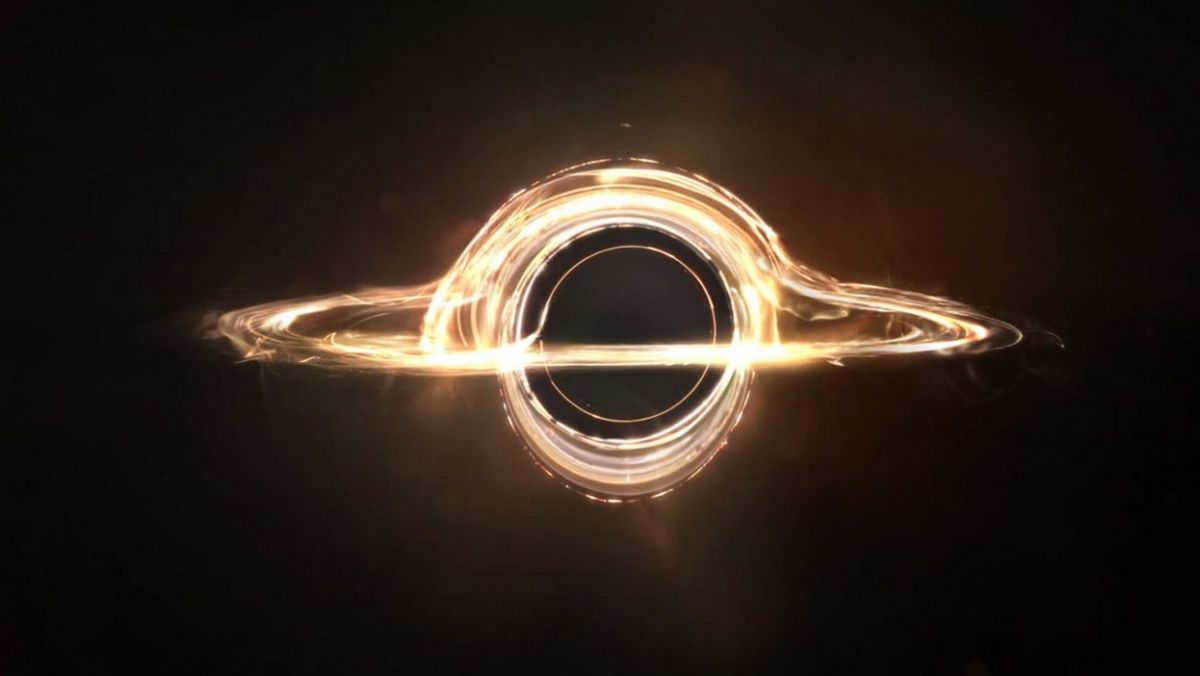
What are those minuscule specks elegantly encircling the Earth? Glints of distant celestial bodies? The gaseous remnants of some far-off nebula? No: it’s simply an immense cluster of debris orbiting our planet. NASA has produced a three-dimensional representation showcasing space debris traversing around Earth. It’s visually striking, isn’t it? Absolutely. Until you realize its nature. NASA’s Artificial Space Object Tracking Division has determined that there exist 21,000 items larger than ten centimeters in flight around the Earth, with approximately half a million… Read more….

Given that the Moon is in close proximity and relatively accessible, it is highly probable that it will be the initial destination for prospective space travelers. Interestingly, the Moon possesses numerous natural marvels that cannot be found on Earth or any other planet within the solar system. One such wonder is Peary Crater, a small crater situated directly at the North Pole of the Moon. It is named after Robert Peary, an Arctic explorer who achieved the remarkable feat of being the first person to reach the North Pole on Earth…. Read more…
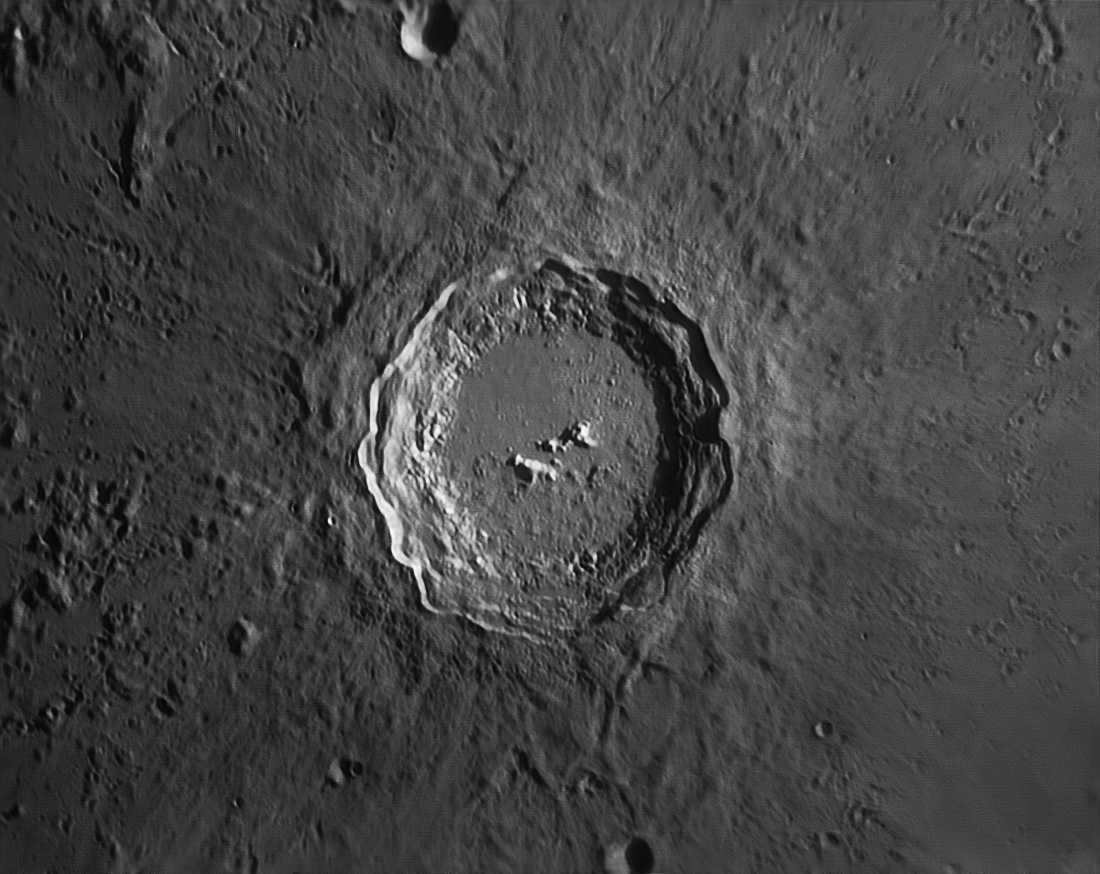
Ever since the dawn of space exploration, humans have been dispatching various items into outer space. Initially, astronauts brought magazines and talismans with them, but over time, a surprising array of objects have been sent soaring towards the stars. 1. Hamburger In 2012, a group of five Harvard students successfully launched a stale hamburger to an altitude of 30,000 meters. After its journey, the burger returned to Earth and ended up lodged in a tall tree located 210 kilometers away from the launch site. The students attempted to dislodge the burger by shooting it with a bow, but their efforts were in vain. Consequently, they were forced to wait for a thunderstorm to dislodge it… Read more…
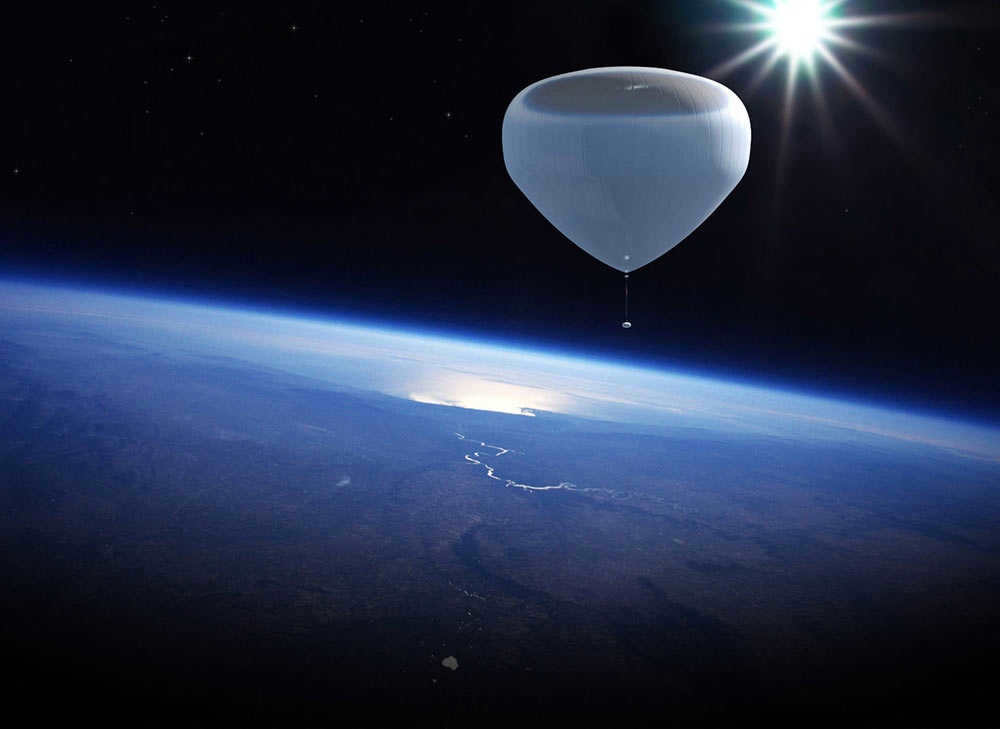
In the northern seas of Titan, the largest moon of Saturn, there exists an island that has been both perplexing and fascinating scientists for some time now. It emerged seemingly out of nowhere, then suddenly vanished, only to reappear in a completely different form. This enigmatic entity, whatever it may be, is evidently undergoing a process of evolution. NASA’s Cassini spacecraft is diligently observing and documenting the evolution of this mysterious landmass that resides in Titan’s vast expanse of hydrocarbon sea known as the Ligeia Sea. Occupying an impressive area of approximately 260 square kilometers, this island is a prominent feature within one of Titan’s largest bodies of liquid. To this day,… Read more…
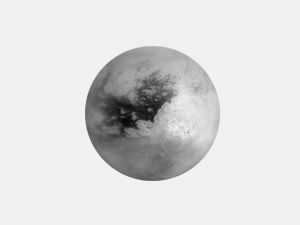
A groundbreaking chemical model of the early solar system has made a remarkable discovery – almost 50% of the water on Earth originated from interstellar ice during the Sun’s formation. This finding challenges the prevailing belief that the moisture in our solar system was a result of localized conditions in the protoplanetary disk. Instead, it suggests that the presence of water is a common occurrence during planet formation, raising the exciting possibility of life beyond our planet. To determine the age of water in our solar system, scientists conducted a thorough analysis of the hydrogen isotope deuterium, which is well-known… Read more…
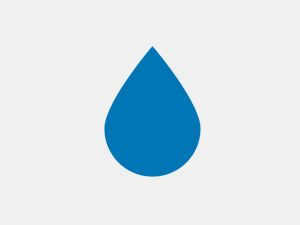
The Royal Observatory has recently revealed the winners of their annual Astronomy Photo of the Year contest, which received an astounding 1,700 submissions. Undoubtedly, this is just a small fraction of the incredible space photographs that were submitted for consideration. One of the winning images is titled “Northern Lights over a frozen lagoon” and was captured by James Woodend from the UK. This mesmerizing photo showcases the pale green glow of the northern lights, which is caused by the interaction between oxygen atoms in the upper atmosphere and particles emitted by the Sun. These particles are drawn towards the Earth’s polar regions…
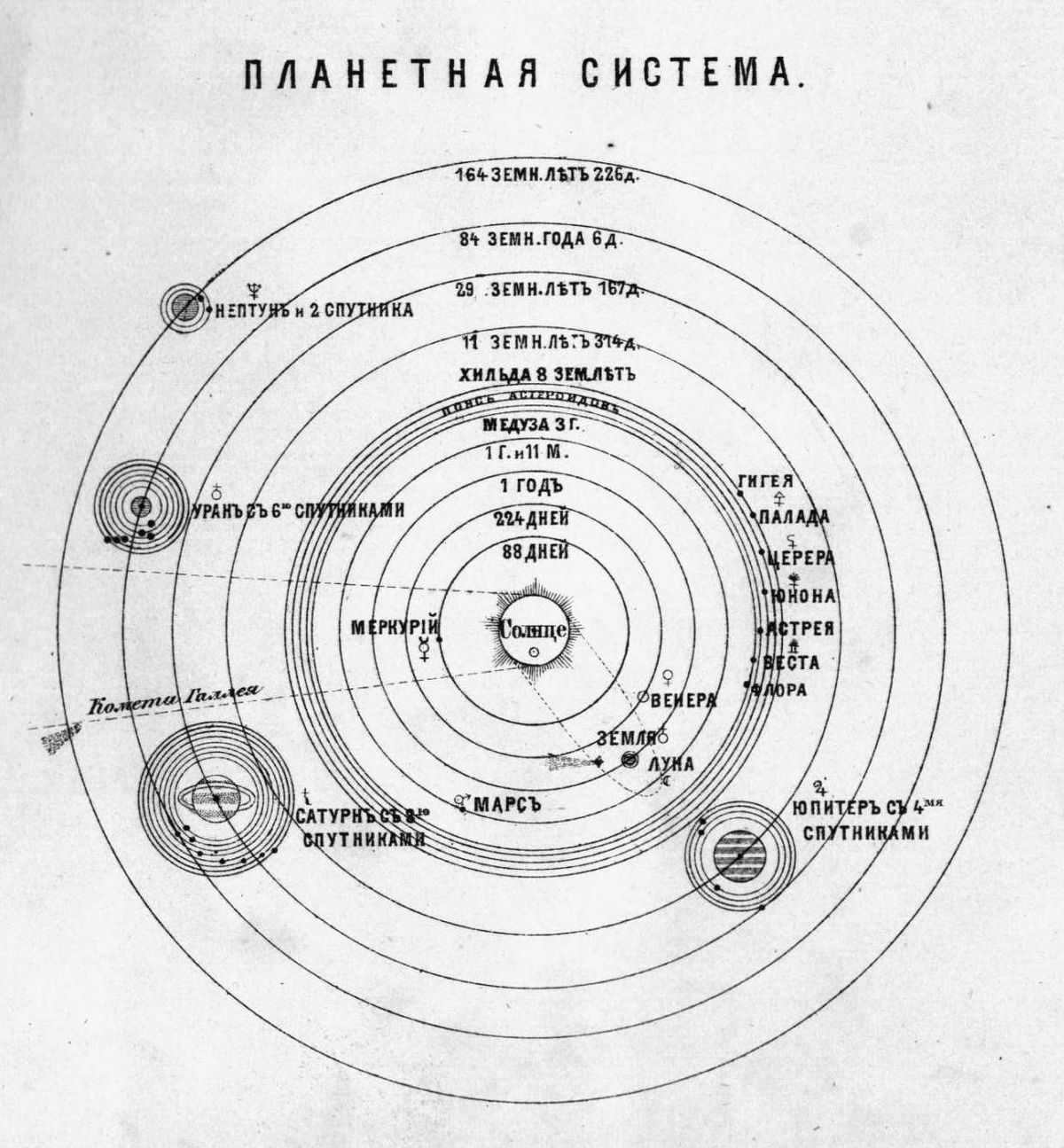
The solar system is a collection of celestial bodies that orbit around the Sun, which is the central star. It was created through the gravitational collapse of a gas and dust cloud approximately 4.57 billion years ago.
The aggregate mass of the solar system is approximately 1.0014 solar mass (☉). The majority of this mass is concentrated in the Sun, while the rest is primarily found in eight distant planets that orbit in close proximity to the ecliptic plane with nearly circular orbits. This arrangement leads to a perplexing distribution of momentum known as the “momentum problem.” Surprisingly, only 2% of the total momentum of the system is attributed to the Sun, despite its mass being approximately 740 times greater than the combined mass of the planets. The remaining 98% of the momentum is distributed among the minuscule 0.001% of the total mass of the Solar System.Andreev V. D. Momentum distribution in the planetary system of the Sun //Newest problems of field theory 2005-2006 (ed. A. V. Aminova), Izd. v. Kazan, Kazan, 2007, pp. 42-56. //also in the book. Template:±. Selected problems of theoretical physics. – Template:Indication of place in bibliosphere reference: Avanpost-Prim, 2012. Template:Wayback.
There are two regions in the solar system that contain numerous small objects. One of these regions is known as the asteroid belt, which is situated between the planets Mars and Jupiter. The asteroid belt shares a similar composition with the inner rocky planets, consisting mainly of silicates and metals. Notable objects within the asteroid belt include the dwarf planet Ceres, as well as the asteroids Pallada, Vesta, and Hygeia. Moving further out from the asteroid belt, beyond the orbit of Neptune, we encounter a different type of small bodies known as trans-Neptunian objects. These objects are primarily composed of frozen water, ammonia, and methane. Among the largest trans-Neptunian objects are Pluto, Sedna, Haumea, Makemake, Kvavar, Ork, and Erida. Additionally, there are various other populations of small bodies within the solar system. These include planetary quasi-satellites, Trojans, near-Earth asteroids, centaurs, damocloids, comets, meteoroids, and cosmic dust, all of which traverse through the solar system.
The flow of plasma from the Sun, known as the solar wind, generates a bubble in the interstellar medium known as the heliosphere, which extends to the outer edge of the scattered disk. The hypothetical Oort cloud, which is the source of long-period comets, may extend approximately a thousand times farther than the heliosphere.
The solar system is a component of the structure of the Milky Way galaxy.
- 1 Structure
- 1.1 Terminology
- 2.1 Sun
- 2.1.1 Interplanetary medium
- 2.2.1 Earth-group planets
- 2.2.1.1 Mercury
- 2.2.1.2 Venus
- 2.2.1.3 Earth
- 2.2.1.4 Mars
- 2.2.2.1 Asteroid groups
- 2.2.2.2 Ceres
- 2.3.1 Giant planets
- 2.3.1.1 Jupiter
- 2.3.1.2 Saturn
- 2.3.1.3 Uranus
- 2.3.1.4 Neptune
- 2.3.1.5 Ninth Planet
- 2.3.4.1 Kuiper Belt
- 2.3.4.1.1 Pluto
- 2.3.4.4.1.2 Farout (Distant)
- 2.3.4.1.3 Haumea
- 2.3.4.1.4 Makemake
- 2.3.4.2.1 Erida
- 2.4.1 Heliosphere
- 2.4.2 Oort Cloud
- 2.4.2.1 Sedna
- 4.1 Solar System Stability
- 5.1 Observations
- 5.2 Geocentric and heliocentric systems
- 5.3 Explorations
- 7.1 Surroundings
Structure [ edit ]
The primary constituent of the solar system is the Sun, a yellow dwarf star of spectral class G2V. The Sun holds approximately 99.866% of the total mass of the system and exerts gravitational force on the planets and other celestial bodies within the solar system. The remaining mass is primarily composed of the four gas giants, which account for 99% of the total remaining mass. Jupiter and Saturn contribute the majority of this mass, approximately 90%.
Most of the larger celestial bodies within the solar system orbit the Sun within a relatively flat plane known as the ecliptic plane. However, comets and objects within the Kuiper Belt often have significant inclinations to this plane.
All celestial bodies, including planets, follow the Sun’s counterclockwise rotation when observed from the Sun’s north pole. However, there are a few exceptions to this rule, such as Halley’s Comet. Among the planets, Mercury boasts the highest angular velocity, completing a full orbit around the Sun in a mere 88 Earth days. On the other end of the spectrum, Neptune, the farthest planet from the Sun, takes a staggering 165 Earth years to complete its orbital period.
The majority of planets also rotate on their axis in the same direction as their orbit around the Sun. This holds true for most planets, except for Venus and Uranus. Uranus, in particular, has a unique rotation pattern, almost “lying on its side” with an axis tilt of approximately 90°. To visually illustrate the concept of rotation, scientists employ a specialized instrument known as a tellurium.
The conventional representation of the solar system often depicts the planets’ orbits as evenly spaced, but in reality, the distance between the orbits of each planet or belt increases as you move farther from the Sun. For instance, Venus is approximately 0.33 a.u. further from the Sun than Mercury, while Saturn is 4.3 a.u. further from Jupiter, and Neptune is 10.5 a.u. further from Uranus. Various attempts have been made to establish correlations between orbital distances, such as the Titius-Bode rule, but none of these theories have gained widespread acceptance.
There are subordinate systems present around most planets in the solar system. Several satellites surround these planets, with some of them even larger than Mercury. The majority of these large satellites are in synchronous rotation, constantly facing one side towards the planet. Additionally, the gas giants, which are the four largest planets, have rings composed of small particles that orbit closely and almost in perfect harmony.
Terminology [ edit ]
Glossary [ edit ]
Lexicon [ edit ]
Vocabulary [ edit ]
Dictionary [ edit ]
The solar system can be divided into different regions. The inner solar system consists of the four Earth-like planets and the asteroid belt. On the other hand, the outer region begins beyond the asteroid belt and includes four gas giants. The planets located within the asteroid belt are often referred to as the “inner planets,” while the ones beyond the belt are known as the “outer planets”Outer planets – an article from the Great Soviet Encyclopedia.. However, these terms can also be used to describe the planets that are closer to Earth’s orbit (lower planets) or further away (upper planets)Template:± Handbook of the amateur astronomy enthusiast. – 4th ed. – Template:Template:Indication of place in bibliosphere reference: Nauka, 1971. – С. 252. – 635 с. – ISBN 9785458272117. Template:Wayback. With the discovery of the Kuiper belt, the region beyond Neptune is now considered the farthest part of the solar system.
Composition [ edit ]
File: Solar planets.jpg mini Planets of the Solar System circle 108 0 20 Sun circle 108 53 5 Mercury circle 108 85 10 Venus circle 108 115 10 Earth circle 108 145 7 Mars circle 108 262 73 Jupiter circle 108 417 59 Saturn circle 108 531 26 Uranus circle 108 599 24 Neptune
- Sun
- Interplanetary medium
- Earth-group planets
- 1. Mercury
- 2. Venus
- 3. Earth
- Moon
- Mars satellites (Phobos and Deimos)
- Ceres
- Giant planets
- 5. Jupiter
- Jupiter’s satellites
- Jupiter rings
- Saturn satellites
- Saturn rings
- Uranus satellites
- Uranus rings
- Moons of Neptune
- Rings of Neptune
- Kuiper Belt
- PlutoUntil August 24, 2006 Pluto was considered the ninth planet of the Solar System, but was stripped of this status by the decision of the XXVI IAU General Assembly due to the discovery of several similar celestial bodies.
- Satellites of Pluto
unknown = _VALUE_ preview = The “_VALUE_” parameter was found in the “cite web” template, please fix it or remove it. showblankpositional = 1 access-date accessdate archive-date archive-date archive-url archivedate archiveurl author author-link authorlink coauthors date date datepublished dead- url deadlink deadurl description doi editor first first first1 first2 first3 first4 first5 format lang language last1 last2 last3 last4 last5 last5 location month pages pages publisher quote ref subtitle title urlurl urlatus website work year >>
The Sun [ edit ]

The Sun serves as the central star within our solar system and is primarily composed of gas and plasma. With a mass equivalent to 332,900 times that of Earth, it possesses the necessary conditions to sustain a thermonuclear reaction at its core. This reaction generates an immense amount of energy, which is emitted into space primarily in the form of electromagnetic radiation. The wavelength range of this radiation falls between 400-700 nm, encompassing the visible light spectrum.
The current position of the Sun on the main sequence indicates that it still possesses a sufficient amount of hydrogen for nuclear fusion and is approximately halfway through its lifespan. At present, the Sun is progressively increasing in luminosity, as during earlier stages of its existence, it was only 70% as bright as it is today.
The Sun, classified as a Type I star in the stellar population, was created during a later phase in the evolution of the Universe. As a result, it possesses a higher abundance of elements heavier than hydrogen and helium (referred to as “metals” in the field of astronomy) compared to older Type II stars. These heavier elements are produced within the cores of initial stars, indicating that the first generation of stars existed before the Universe experienced enrichment with such elements. The most ancient stars consist of only a small quantity of metals, while younger stars contain a greater amount. It is hypothesized that a significant metallicity played a crucial role in the formation of a planetary system in close proximity to the Sun, as planets are formed through the gradual accumulation of these “metals”.
Interstellar Space [ edit ]
Together with visible light, the Sun releases a constant flow of charged particles (plasma) called the solar wind. This flow of particles travels at a velocity of approximately 1.5 million kilometers per hour, filling the region near the Sun and forming a planetary atmosphere-like environment (heliosphere), which extends at least 100 a.u. away from the Sun. This environment is known as the interplanetary medium. Solar activity, such as solar flares and coronal mass ejections, disrupts the heliosphere and creates space weather. The heliospheric current layer, a spiral surface formed by the Sun’s rotating magnetic field on the interplanetary medium, is the largest structure within the heliosphere.
The magnetic field of Earth serves as a protective shield against the solar wind, preventing it from stripping away the atmosphere. In contrast, Venus and Mars lack a magnetic field, causing the solar wind to gradually erode their atmospheres, leading to loss into space. The magnetic field of Earth can be influenced by events like coronal mass ejections, which carry massive amounts of material from the Sun’s surface, estimated to be around 10^9-10^10 tons per hourSchrijver, Carolus J.; Zwaan, Cornelis (2000). Solar and stellar magnetic activity Template:Wayback. Cambridge University Press. ISBN 0-521-58286-5.. When this material interacts with Earth’s magnetic field, it primarily enters the upper subpolar layers of the atmosphere, resulting in the formation of auroras that are commonly observed near the magnetic poles.
The interplanetary medium is where two disk-like regions of cosmic dust are formed. One of these regions, known as the zodiacal dust cloud, is situated within the solar system and is responsible for the appearance of the zodiacal light. It is believed that this dust cloud was created as a result of collisions occurring within the asteroid belt due to interactions with planets. The second region extends from approximately 10 to 40 a.u. and is thought to have formed through similar collisions between objects within the Kuiper belt.
The inner part of the solar system [ edit ]
The inner part comprises the planets of the Earth group and asteroids. Made up primarily of silicates and metals, the objects in the inner part are in relatively close proximity to the Sun. It is the smallest section of the system, with a radius smaller than the distance between the orbits of Jupiter and Saturn.
Planets of the Earth group [ edit ]
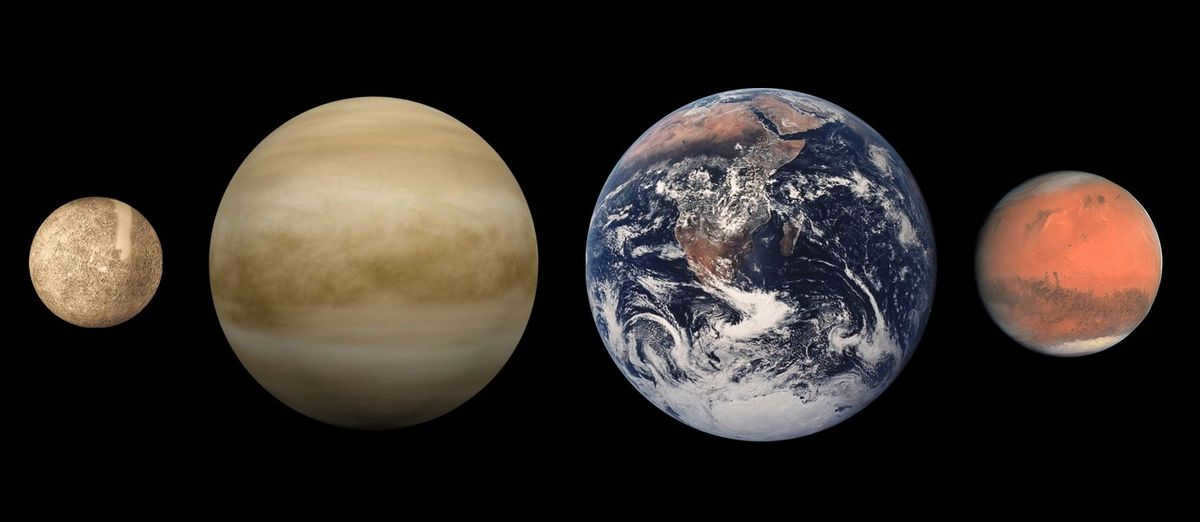
The planets in the Solar System. Starting from the left, they are Mercury, Venus, Earth, and Mars. Please note that the sizes are to scale, but the distances between the planets are not.
Mercury [ edited ]
Venus [ edit ]
Template:Main Venus is similar in size to Earth (0.815 times the mass of Earth) and, like Earth, possesses a thick silicate crust surrounding an iron core, as well as an atmosphere (Venus is often referred to as Earth’s “sister” because of these similarities). There are also indications of active geological processes occurring within Venus. However, Venus has a significantly lower amount of water compared to Earth and its atmosphere is 90 times denser. Venus does not have any natural satellites. It is the hottest planet in our solar system, with surface temperatures exceeding 400 degrees Celsius. The most probable explanation for this extreme heat is the greenhouse effect, which is caused by the presence of a dense atmosphere rich in carbon dioxide. Although there are no obvious signs of contemporary geological activity on Venus, the absence of a magnetic field to protect its dense atmosphere suggests that the atmosphere is regularly replenished through volcanic eruptions.
Planet Earth [ edit ]
Template:Main Planet Earth, the largest and most dense planet in the terrestrial group, showcases the phenomenon of plate tectonics. The possibility of life existing outside of our planet remains an unanswered question. What sets Earth apart from other planets in the terrestrial group is its unique hydrosphere. The Earth’s atmosphere differs significantly from that of other celestial bodies as it contains abundant free oxygen. Additionally, Earth boasts a single natural satellite, known as the Moon, which stands as the sole major satellite among the planets in the solar system.
Mars [edit]
Template:Main Mars is smaller than Earth and Venus (0.107 Earth masses). It possesses an atmosphere primarily composed of carbon dioxide, with a surface pressure of 6.1 mbar (0.6% of Earth’s). It features volcanoes on its surface, with the largest one, Olympus, surpassing the size of any volcano on Earth and reaching an impressive height of 21.2 kilometersЖ. F. Rodionova, Y. A. Ilyukhina. A novel topographic map of Mars Template:Wayback. Rift depressions, such as the Mariner valleys, in addition to the volcanoes, provide evidence of past geological activity, which some data suggest may have even persisted within the last 2 million years. The red hue of Mars’ surface is a result of significant amounts of iron oxide present in its soil. The planet has two natural satellites, Phobos and Deimos, which are thought to be captured asteroids.. Mars is, to date (excluding Earth), the most extensively studied planet within our solar system.
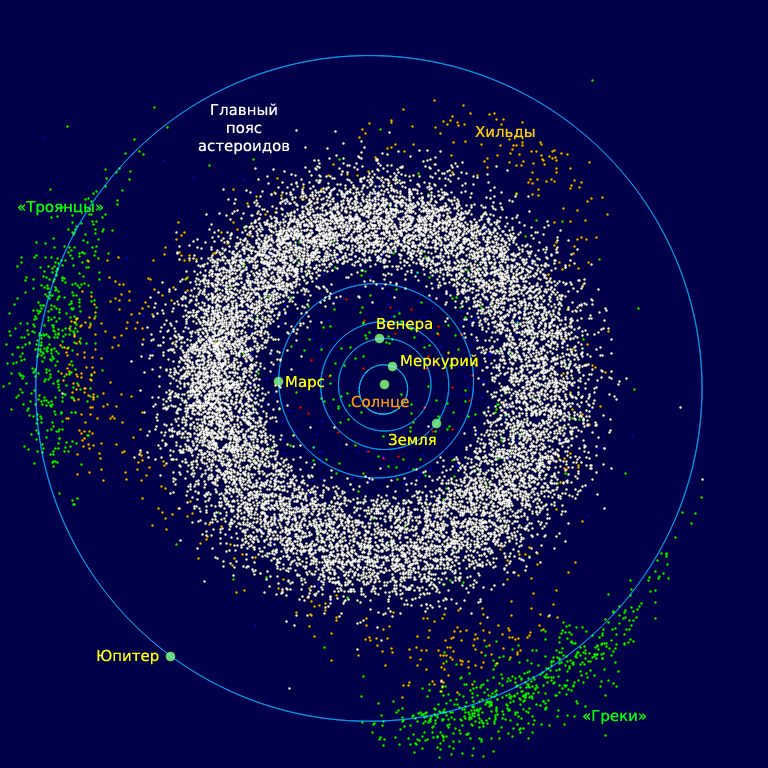
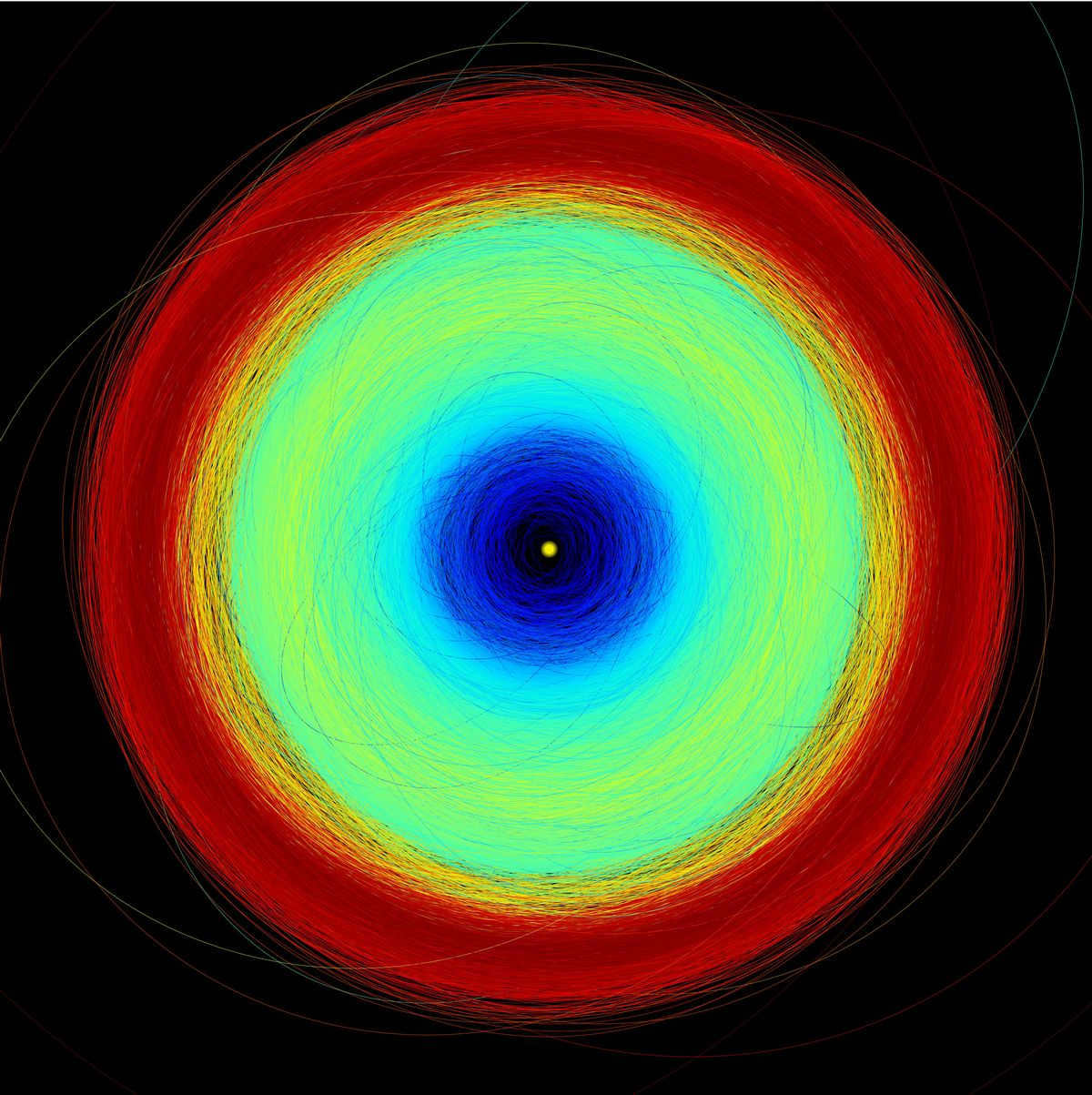
The final version of the third catalog (Data Release 3, Template:Hp5) of Gaia provides information on the orbits of more than 150,000 asteroids. These asteroids are located in various parts of the Solar System, ranging from the inner region to the Trojan asteroids near Jupiter. Each asteroid is assigned a different color code. The Sun is represented by a yellow circle at the center. The inner region of the solar system, where near-Earth asteroids cross paths with Mars and the Earth-group planets, is depicted in blue. The main belt between Mars and Jupiter is colored green. Lastly, Jupiter’s trojans are shown in red.
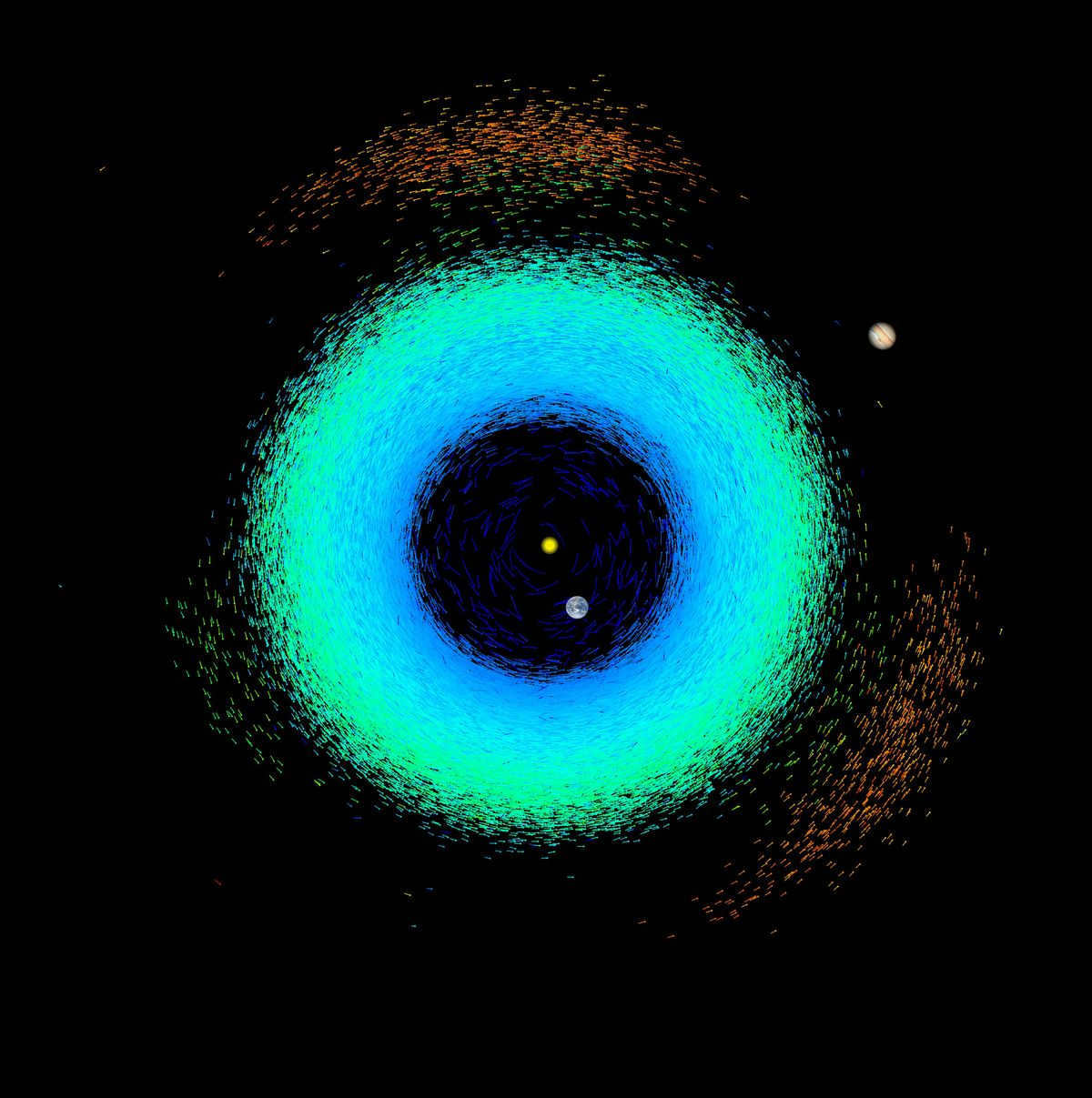
The current location of each asteroid as of June 13, 2022 has been graphically depicted. To illustrate their movement over a span of 10 days, each asteroid is represented by a line segment. The inner celestial bodies, which orbit closer to the Sun (indicated by the yellow circle in the center), move at a faster pace. The blue color denotes the inner region of the solar system, where near-Earth asteroids intersect with the paths of Mars and the planets in the Earth-group. The main belt situated between Mars and Jupiter is depicted in green. Additionally, there are two orange “clouds” which signify the presence of Jupiter’s Trojan asteroids.
The space between Mars and Jupiter, known as the asteroid belt, spans from 2.3 to 3.3 astronomical units (a.u.) from the Sun. Scientists have put forth various ideas, although none have been confirmed, about the possible existence of a planet in this region. One example is the hypothetical planet Phaethon, which may have collapsed during the early stages of the solar system’s formation, giving rise to the asteroids that now populate the belt. Modern theories suggest that these asteroids are actually remnants from the solar system’s formation, specifically planetesimals that were unable to merge into a larger celestial body due to the gravitational disturbances caused by Jupiter.
Asteroids come in a range of sizes, from just a few meters to hundreds of kilometers. Although all asteroids are currently classified as small solar system bodies, there are some bodies, like Vesta and Hygeia, that may be reclassified as dwarf planets if they can be proven to maintain hydrostatic equilibrium.
The asteroid belt is home to tens of thousands, and possibly even millions, of objects that are larger than one kilometer in diameter. However, despite the large number of asteroids in the belt, their total mass is unlikely to exceed one thousandth of the mass of Earth. Celestial bodies that have diameters ranging from 100 microns to 10 meters are known as meteoroids, while particles smaller than that are considered to be space dust.
Asteroid categories [ edit ]
Asteroids are categorized into various groups and families based on the unique characteristics of their orbits. Asteroid satellites refer to those asteroids that orbit around other asteroids. While not as distinct as planetary satellites, these satellites can sometimes be almost as large as their host asteroid. Additionally, within the asteroid belt, there are also comets which belong to the main asteroid belt. These comets are believed to have played a role in the presence of water on Earth.
The Trojan asteroids are situated at the Lagrange points [[Lagrange points#L4 and L5 LTemplate:Sub and LTemplate:Sub]] of Jupiter (gravitationally stable regions of influence of the planet traveling with it in its orbit); the term “Trojans” is additionally utilized for space rocks situated at the Lagrange focuses of some other planets or satellites (notwithstanding Jupiter’s Trojans, there are known Trojans of Earth, Mars, Uranus, and Neptune). Space rocks of the Hilda family are in a 2:3 resonance with Jupiter, that is, they make three transformations around the Sun in the time of two full transformations of Jupiter.
There are likewise gatherings of space rocks in the internal solar system with circles extending from Mercury to Mars. The circles of a large number of them cross the circles of the internal planets.
Template:Main Ceres (2.77 a.u.) is the dominant celestial object in the asteroid belt and is recognized as a dwarf planet. With a diameter of approximately 1000 km, Ceres possesses enough mass to maintain a spherical form due to its gravitational pull. Initially identified as a planet, subsequent observations revealed the presence of several asteroids in close proximity to Ceres, prompting its reclassification as an asteroid in the 1850s. Finally, in 2006, Ceres was officially reclassified as a dwarf planet.
The outer area of the solar system [edit]
The outer region of our solar system is the abode of gigantic gas planets and their moons, along with objects beyond Neptune, the asteroid-comet-gas belt, the Kuiper Belt, the Scattered Disk, and the Oort cloud. Numerous short-period comets and centaur asteroids also traverse this expanse. The solid entities found in this domain, due to their considerable distance from the Sun, experience much lower temperatures and are composed of water, ammonia, and methane ices. The existence of the planet Tyuhe and potentially other “Planets X”, as well as the Sun’s companion star Nemesis, are postulated within the outer area.
Enormous planets [ edit ]
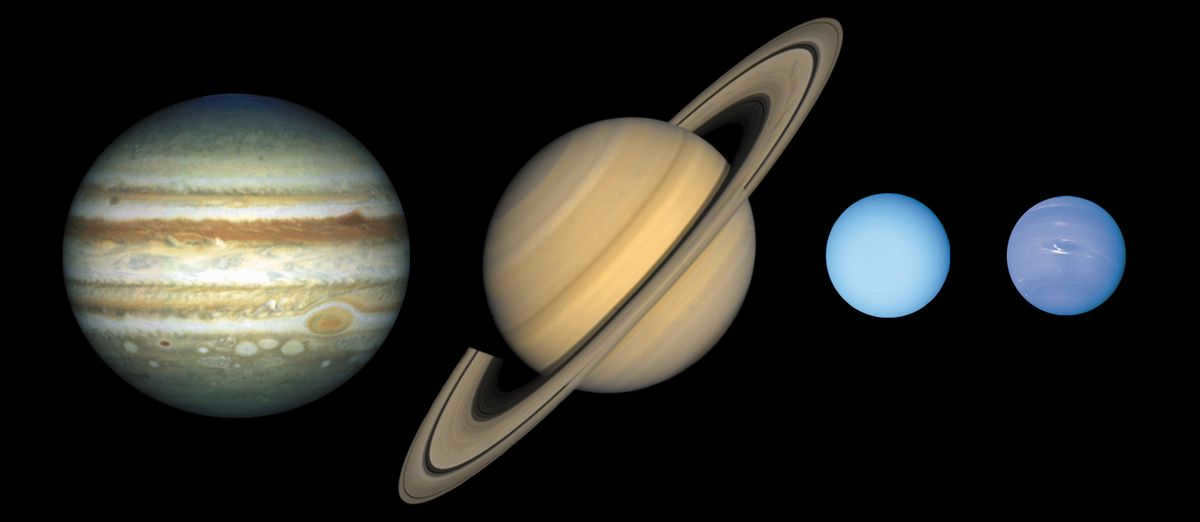
The massive planets. From left to right: Jupiter, Saturn, Uranus, and Neptune (proportional sizes, distances between planets not shown)
The four massive planets, also known as gas giants, collectively hold 99% of the total mass of the Sun’s orbiting objects. Jupiter and Saturn are primarily composed of hydrogen and helium, while Uranus and Neptune have a higher concentration of ice in their makeup. Some astronomers categorize Uranus and Neptune as “ice giants” due to this difference. All four massive planets possess rings, although only Saturn’s ring system is easily visible from Earth.
Template:Main Jupiter is a celestial body with a weight that is 318 times greater than that of Earth. In fact, it is 2.5 times more massive than all the other planets combined. The planet is primarily composed of hydrogen and helium. Due to Jupiter’s high internal temperature, it experiences various semi-permanent vortex structures in its atmosphere, including cloud bands and the well-known Great Red Spot.
Furthermore, Jupiter has a total of 95 satellites orbiting around it. Among these satellites, the four largest ones – Ganymede, Callisto, Io, and Europa – exhibit phenomena similar to those seen in the planets of the Earth group, such as volcanic activity and internal heating. It is worth noting that Ganymede, the largest satellite in the entire solar system, surpasses the size of Mercury.
Saturn [ edit ]
Template:Main Saturn, famous for its expansive ring system, possesses a somewhat comparable composition of atmosphere and magnetosphere to that of Jupiter. Despite having a volume that is 60% of Jupiter’s, Saturn’s mass, which amounts to 95 Earth masses, is less than one-third that of Jupiter’s. Consequently, Saturn stands as the least dense planet in the entire solar system, with an average density even lower than that of water and gasoline.
Uranus [ edit ]
Template:Main Uranus possesses a mass that is 14 times greater than that of Earth, making it the lightest among the giant planets. What sets it apart from the other planets is its unique rotational orientation, commonly referred to as “lying on its side”: the equatorial plane of Uranus is tilted approximately 98° relative to the plane of its orbit Template:±. Report of the IAU/IAGWorking Group on cartographic coordinates and rotational elements: 2006 (English) // Celestial Mech. Dyn. Astr. : journal. – 2007. – Template:Bsocr – Template:Bsocr – doi:10.1007/s10569-007-9072-y [ Error: Invalid DOI! ] . Archived May 19, 2019. . While the other planets can be likened to spinning wolves, Uranus resembles more of a rolling ball. Its core is significantly colder than that of other gas giants and emits minimal heat into space.
Neptune [ edit ]
Template:Main Neptune, despite being slightly smaller than Uranus, possesses a greater mass (equivalent to 17 Earth masses) and therefore a higher density. It emits a greater amount of internal heat, although not as much as Jupiter or Saturn.
Neptune is known to have 14 satellites. The largest among them, Triton, is actively undergoing geological processes, displaying geysers of liquid nitrogen. Triton is the sole major satellite that orbits in the opposite direction. Additionally, Neptune is accompanied by a group of asteroids known as Neptune’s Trojans, which maintain a 1:1 resonance with the planet.
Take a journey through our solar system’s planets, starting from the closest to the sun and progressing to the furthest.
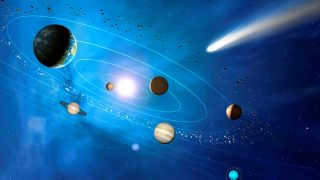
Discover the various planets in our solar system, ranging from the closest to the sun to the farthest. (Image credit: MARK GARLICK/SCIENCE PHOTO LIBRARY via Getty Images)
- Types of planets within the solar system
- Frequently asked questions about the solar system
- Definition of a planet
- The sun
- Mercury
- Venus
- Earth
- Mars
- The belt of asteroids
- Jupiter
- Saturn
- Uranus
- Neptune
- The region beyond Neptune
- Pluto
- Planet Nine
- The outer limits of the solar system
- How the solar system was formed
The sequence of planets in our solar system begins with Mercury, followed by Venus, Earth, Mars, Jupiter, Saturn, Uranus, Neptune, and potentially Planet Nine.
Spanning from the sun, the solar system encompasses the four inner planets, then passes through the asteroid belt towards the four gas giants, and further extends to the disk-shaped Kuiper Belt. Finally, it reaches far beyond to the teardrop-shaped heliopause.
According to scientists, the boundary of the solar system is estimated to be approximately 9 billion miles (15 billion kilometers) away from the sun. Beyond the heliopause lies the expansive and spherical Oort Cloud, which is believed to envelop our solar system.
Since the discovery of Pluto in 1930, children have been taught that the solar system consists of nine planets. However, this belief was challenged in the late 1990s when astronomers began to question whether Pluto should be classified as a planet. After much debate, the International Astronomical Union made the controversial decision in 2006 to classify Pluto as a “dwarf planet,” thereby reducing the number of recognized planets in our solar system to eight.
If we were to include Pluto in the list, it would be positioned after Neptune. However, due to its distant location and highly tilted, elliptical orbit (among other factors), Pluto was downgraded from planet status.
Categories of planets in the solar system
The terrestrial planets, which include Mercury, Venus, Earth, and Mars, are categorized as such due to their rocky surfaces. Pluto, although having a frozen rocky surface, is not included in this group.
The Jovian planets, namely Jupiter, Saturn, Uranus, and Neptune, are referred to as such because of their massive size compared to the terrestrial planets. These planets are primarily composed of gases like hydrogen, helium, and ammonia, rather than having rocky surfaces. However, astronomers speculate that some or all of them may possess solid cores.
If the planets were to be arranged in order of size, starting from the smallest, they would be Mercury, Mars, Venus, Earth, Neptune, Uranus, Saturn, and Jupiter.
The gas giants Jupiter and Saturn are often referred to as such, while the ice giants Uranus and Neptune, which are further away, have earned their nickname due to their higher content of atmospheric water and other ice-forming molecules like methane, hydrogen sulfide, and phosphene. These substances crystallize into clouds in the extremely cold conditions of these planets, as explained by the Planetary Society. To put it into perspective, methane crystallizes at a temperature of minus 296 Fahrenheit (minus 183 degrees Celsius), as stated by the U.S. National Library of Medicine.
Frequently Asked Questions about Solar Systems Answered by an Expert
We reached out to Maximilian Guenther, a renowned expert in the field and the European Space Agency (ESA) Project Scientist and Mission Representative for the CHEOPS (Characterising Exoplanets Satellite) mission, to answer some common questions about solar systems.
Maximilian Guenther is a highly respected scientist who is actively involved in multiple space and ground-based telescope projects. His primary focus is on the search for Earth-sized exoplanets orbiting small stars and understanding the impact of stellar flares on their potential habitability. In his free time, he enjoys exploring our own planet, traveling, and engaging in outdoor activities such as scuba diving, rock climbing, and hiking.
Are there any other solar systems in the Milky Way?
Absolutely! If you had posed this question just three decades ago, the response would have been “we have no clue”. However, since that time, we have managed to uncover over 5,000 planets circling stars that are not our own sun (known as exoplanets). Furthermore, as it is not uncommon to find multiple planets orbiting the same star, we can estimate that there are approximately 4,000 other solar systems.
Do solar systems have movement?
Definitely, and they move in various ways. Firstly, all exoplanets revolve around their stars, similar to how our planets (such as Earth and Mars) revolve around our sun. Additionally, our solar system and other systems revolve around the black hole at the center of the Milky Way. Furthermore, certain solar systems have not only one, but multiple stars (like Tatooine!), and these stars engage in a synchronized dance with each other, accompanied by their exoplanets.
That is the question worth 1 million Euros. Currently, we are in the process of investigating the mechanisms that contribute to the development and transformation of alternative solar systems, as well as the insights we can gain from this research regarding the history of our own solar system, and even Earth’s. It is believed that numerous other stars possess exoplanets in their orbit, though not all of them. On average, studies have observed that each star tends to have approximately 1 to 2 exoplanets, although this is just an average. Certain stars may have as many as 8 exoplanets, while others may not have any at all.
What Defines a Planet?
According to the International Astronomical Union (IAU), a planet is a celestial body that orbits the sun independently, without being a satellite of another object. Additionally, it must be large enough to have its own gravitational force, which gives it a rounded shape. However, it should not be so massive that it undergoes nuclear fusion, like a star. Finally, a planet must have “cleared its neighborhood” by removing most other orbiting bodies.
This definition was necessary because astronomers were discovering more and more objects in the solar system that resembled planets. To address the confusion, the IAU reclassified Pluto as a dwarf planet, as it did not meet the criteria set forth in the definition.
Pluto has a problem, apart from its small size and unusual orbit, in that it does not clear its neighborhood of debris – it coexists with many other objects in the Kuiper Belt. However, the decision to demote Pluto is still a topic of controversy.
The International Astronomical Union’s (IAU) definition of a planet also placed other small, spherical worlds into the category of dwarf planets, such as Eris, Haumea, and Makemake, which are found in the Kuiper Belt.
Ceres, a spherical object located in the Asteroid Belt between Mars and Jupiter, was also excluded. When Ceres was discovered in 1801, it was initially considered a planet, but later it was determined to be an asteroid. However, this classification did not quite fit because Ceres was much larger (and rounder) than the other asteroids. In 2006, astronomers instead classified it as a dwarf planet, although some astronomers prefer to regard Ceres as the 10th planet (not to be confused with Nibiru or Planet X).
Here is a concise summary of the eight genuine planets within our solar system, arranged in order from the closest to the sun to the furthest away:
The Sun
The Sun is unequivocally the largest celestial body within our solar system, comprising 99.8% of its total mass. It emits the majority of the heat and light necessary for sustaining life on Earth and potentially other places. The planets revolve around the Sun in elliptical paths known as ellipses, with the Sun slightly offset from the center of each ellipse.
NASA operates a fleet of spacecraft that observe the Sun, such as the Parker Solar Probe, with the goal of acquiring a deeper understanding of its composition and making more accurate predictions about space weather and its impact on Earth.
Mercury: The planet closest to the sun
Mercury is the closest planet to the sun and the smallest celestial body in the solar system — it is just slightly larger than Earth’s moon. Mercury orbits the sun in a quick 88 days, as it is situated at a distance that is about two-fifths of the gap between Earth and the sun.
Mercury undergoes significant fluctuations in its diurnal and nocturnal temperatures. During the day, temperatures on Mercury can soar to a scorching 840 F (450 C), which is hot enough to liquefy lead. Conversely, on the night side, temperatures plummet to minus 290 F (minus 180 C).
– Discovery: Known to the ancient Greeks and observable with the naked eye
– Name: Named after the messenger of the Roman gods
– Diameter: 3,031 miles (4,878 km)
– Orbit: 88 Earth days
– Day: 58.6 Earth days
– Number of moons: 0
Mercury has a very thin atmosphere composed mostly of oxygen, sodium, hydrogen, helium, and potassium. Due to its thin atmosphere, it is unable to protect itself from incoming meteors, resulting in a surface filled with craters, similar to the moon.
During its four-year mission, NASA’s MESSENGER spacecraft made astonishing discoveries that defied astronomers’ expectations. One of these discoveries was the presence of water ice and frozen organic compounds at Mercury’s north pole, as well as the significant role of volcanism in shaping the planet’s surface.
Venus: Earth’s celestial counterpart
Venus, the second celestial body from the sun, holds the title for being the most scorching planet within our solar system. With its dense and noxious atmosphere consisting of sulfuric acid clouds, this planet serves as an extreme example of the greenhouse effect.
– Unveiling: Familiar to the ancient Greeks and visible to the unaided eye
– Named after the Roman deity of love and beauty
– Diameter: Measuring 7,521 miles (12,104 km)
– Orbit: Comprising 225 Earth days
– Day: Lasting 241 Earth days
– Number of moons: None
With an average surface temperature of 900 F (465 C), Venus’ environment is incredibly hostile. At a pressure of 92 bar, the surface would exert enough force to crush and eliminate any lifeform. Furthermore, Venus rotates in a peculiar manner, moving slowly from east to west, contrary to the majority of other planets.
The Greeks had the belief that Venus was actually two separate entities – one that appeared in the morning sky and another that could be seen in the evening. Due to its exceptional brightness, Venus has been the subject of numerous reports of unidentified flying objects (UFOs).
Earth: Our Planet, Home to an Abundance of Life
Earth, our home planet, is positioned as the third planet from the sun. It is predominantly a water-based world, with approximately two-thirds of its surface covered by water. The atmosphere of Earth contains a high concentration of nitrogen and oxygen, making it the only known celestial body capable of supporting life.
– The name “Earth” is derived from the German word “Die Erde,” which translates to mean “the ground.”
– Diameter: Approximately 7,926 miles (12,760 km)
– Orbit: Completes one orbit around the sun in 365.24 days
– Day: Consists of 23 hours and 56 minutes
– Number of moons: 1
Earth rotates at a speed of 1,532 feet per second (467 meters per second) on its axis, which is slightly over 1,000 mph (1,600 kph) at the equator. The planet swiftly orbits the sun at a rate of over 18 miles per second (29 km per second).
Mars: The Red Planet of the solar system
Mars, the fourth planet from the sun, is characterized by its cold and desert-like environment, covered in iron oxide dust that gives it its distinctive red color. Mars shares similarities with Earth, such as its rocky terrain, featuring mountains, valleys, canyons, and a variety of storm systems ranging from localized dust devils resembling tornadoes to planet-wide dust storms.
Scientific evidence of considerable magnitude suggests that Mars, billions of years ago, was a significantly warmer and wetter planet, hosting rivers and possibly even oceans. While the thin atmosphere of Mars prevents the existence of liquid water on its surface for extended periods, remnants of its wetter past still endure. Sheets of water ice, equivalent in size to California, lie beneath the surface of Mars, while its poles are adorned with ice caps composed partially of frozen water.
– Discovery: The ancient Greeks were aware of its existence, and it was visible to the naked eye.
– Named: Named after the Roman god of war.
– Diameter: Measures 4,217 miles (6,787 km) in diameter.
– Day: Consists of slightly over one Earth day, equivalent to 24 hours and 37 minutes.
– Number of moons: Has 2 moons.
Scientists also believe that ancient Mars could have had the necessary conditions to sustain life, such as bacteria and other microorganisms. The hope of finding evidence of past life, and even the potential for current life forms, has been a driving force behind numerous missions to Mars. As a result, the Red Planet has become one of the most extensively studied planets in our solar system.
The region of space known as the asteroid belt
Positioned between the planets Mars and Jupiter, we find the asteroid belt. These celestial bodies, commonly referred to as asteroids, are smaller planets that are estimated by NASA to number between 1.1 and 1.9 million in the main asteroid belt alone. These asteroids have a diameter larger than 0.6 miles (1 km), with millions more asteroids of smaller size also present.
Within this vast expanse, we can find the dwarf planet Ceres, which measures approximately 590 miles (950 km) in diameter. It is worth noting that some of these asteroids have orbits that bring them closer to our solar system, occasionally resulting in collisions with Earth or other inner planets.
Jupiter: The most massive planet in our solar system
Jupiter is the fifth celestial body from the sun and the largest planet in the solar system. According to NASA, this gas giant outweighs all other planets combined by more than two times.
– Discovery: Jupiter was recognized by the ancient Greeks and can be observed with the naked eye.
– Named after the supreme deity of the Roman pantheon.
– Diameter: 86,881 miles (139,822 km)
– Orbit: Takes approximately 11.9 Earth years to complete one revolution around the sun.
– Day: The rotation of Jupiter takes about 9.8 Earth hours.
– Number of moons: Jupiter has a total of 79 moons, with 53 being confirmed and 26 being provisional.
The distinctive colors of Jupiter’s swirling clouds are caused by various trace gases such as ammonia ice, ammonium hydrosulfide crystals, as well as water ice and vapor.
One of the most well-known characteristics of Jupiter is its swirling clouds, which contain a massive storm called the Great Red Spot. This enormous storm, which spans over 10,000 miles, was first discovered in 1831 by an amateur astronomer named Samuel Heinrich Schwabe. Remarkably, the Great Red Spot has maintained wind speeds of over 400 mph for the past 150 years.
In addition to its impressive storm, Jupiter also boasts a powerful magnetic field. Furthermore, it is home to an incredible 75 moons, including Ganymede, the largest moon in the entire solar system.
Saturn: The Majestic Planet with a Striking Ring System
Saturn, the sixth planet from the sun, is renowned for its magnificent and distinctive ring system. While Saturn is not the sole planet in our solar system to possess rings, it is undoubtedly the most prominent.
– Discovery: Known to the ancient Greeks and visible to the naked eye
– Named after the Roman god of agriculture
– Diameter: 74,900 miles (120,500 km)
– Orbit: 29.5 Earth years
– Day: Approximately 10.5 Earth hours
– Number of moons: 82 (53 confirmed, 29 provisional)
If you were to place Saturn in a bathtub, it would actually float due to its average density being less than that of water. Of course, you would need an exceptionally large bathtub to accommodate its size…
The rings of Uranus are composed of a combination of ice and rock, and their formation remains a mystery to scientists. This gaseous planet consists mainly of hydrogen and helium and is also home to a multitude of moons.
Uranus: The Unique and Tilted Planet in our Solar System
Uranus, the seventh planet from the sun, stands out as an eccentric member of our solar system.
Unlike any other planet, it possesses clouds made up of hydrogen sulfide, the very same chemical responsible for the foul odor associated with rotten eggs. Furthermore, Uranus exhibits a distinctive rotational pattern, moving from east to west, just like Venus. However, unlike Venus or any other planet, Uranus is tilted to such an extent that its equator is nearly perpendicular to its orbit — essentially, it orbits on its side.
– Discovery: Uranus was first discovered in 1781 by William Herschel, who initially believed it to be a star.
– Name: The planet was named after the ancient mythological personification of heaven.
– Diameter: Uranus has a diameter of 31,763 miles (51,120 km).
– Orbit: Uranus completes one orbit around the sun in approximately 84 Earth years.
– Length of a day: 18 Earth hours
– Number of moons: 27
Astronomers speculate that approximately 4 billion years ago, Uranus experienced a collision with an object twice the size of Earth, resulting in its unique tilt. This tilt leads to extreme and lengthy seasons that endure for over 20 years, while one pole or the other is exposed to the sun for a staggering 84 Earth-years.
Furthermore, it is believed that this collision caused rock and ice to be thrown into Uranus’ orbit, eventually forming the planet’s impressive collection of 27 moons. The distinctive blue-green hue of Uranus can be attributed to the presence of methane in its atmosphere. Additionally, Uranus possesses 13 distinct sets of faint rings.
Uranus holds the distinction of having the coldest temperature ever recorded in the solar system, plummeting to a bone-chilling minus 371.56 degrees Fahrenheit (minus 224.2 degrees Celsius). On average, Uranus maintains a temperature of minus 320 degrees Fahrenheit (-195 degrees Celsius).
Neptune: A massive, turbulent blue planet
Neptune, the eighth celestial body from the sun, is consistently the most frigid planet within the solar system. The temperature at the uppermost layer of Neptune’s clouds averages at a bone-chilling -346 degrees Fahrenheit (-210 degrees Celsius).
– Discovery: 1846
– Named after the Roman god of water
– Diameter: 30,775 miles (49,530 km)
– Orbit: 165 Earth years
– Day: 19 Earth hours
– Number of moons: 14
Neptune shares a similar size with Uranus and is notorious for its incredibly swift winds. This colossal planet is situated over 30 times farther away from the sun compared to Earth.
Neptune was the initial planet anticipated to exist by utilizing mathematics, rather than being visually perceived. Inconsistencies in the orbit of Uranus led to the suggestion by French astronomer Alexis Bouvard that another planet might be exerting a gravitational pull. German astronomer Johann Galle employed calculations to assist in the discovery of Neptune through a telescope. Neptune is approximately 17 times more massive than Earth and possesses a rocky nucleus.
Trans-Neptunian area
For a considerable period, astronomers held the belief that a stretch of frozen matter called the Kuiper Belt existed beyond the orbit of Neptune, spanning from approximately 30 to 55 times the distance from Earth to the sun. From the 1990s until the present time, they have discovered over a thousand of these objects. Researchers calculate that the Kuiper Belt probably houses hundreds of thousands of icy entities larger than 60 miles (100 km) in diameter, along with an estimated trillion or more comets.
Pluto, once thought to be a full-fledged planet, is now classified as a dwarf planet and resides in the Kuiper Belt. However, it is not alone in this region of space – there have been recent additions to the dwarf planet family, including Makemake, Haumea, and Eris. Another object in the Kuiper Belt called Quaoar may also be massive enough to be considered a dwarf planet, although it has not yet been officially classified as such. Meanwhile, Sedna, which is approximately three-fourths the size of Pluto, holds the distinction of being the first dwarf planet discovered in the Oort Cloud. On July 14, 2015, NASA’s New Horizons mission made history by performing the first-ever flyby of the Pluto system.
Pluto: Formerly a Planet, Now a Dwarf Planet
Pluto used to be the ninth planet in our solar system and stands out from all the other planets in various ways.
– Discovery: Discovered in 1930 by Clyde Tombaugh
– Named after the Roman god of the underworld, Hades
– Diameter: Measures 1,430 miles (2,301 km)
– Orbit: Completes one orbit in 248 Earth years
– Day: Takes 6.4 Earth days to complete one rotation
– Number of moons: Has a total of 5 moons
Pluto is smaller than Earth’s moon and its orbit is highly elliptical. It sometimes falls inside Neptune’s orbit and at other times, it goes far beyond it. Additionally, Pluto’s orbit is inclined 17.1 degrees above or below the plane of the other planets in our solar system.
Pluto, which is smaller in size compared to Earth’s moon, follows a highly elliptical orbit. Its orbit intersects with Neptune’s orbit at certain points and extends far beyond it at other points. Additionally, Pluto’s orbit deviates from the same plane as the rest of the planets in our solar system, instead orbiting at an angle of 17.1 degrees above or below. It takes Pluto 288 years to complete a single orbit, as stated by the European Space Agency (ESA).
Between 1979 and early 1999, Pluto held the position of the eighth planet from the sun. However, on February 11, 1999, it crossed paths with Neptune and once again became the most distant planet in our solar system. This changed when Pluto was reclassified as a dwarf planet. Despite its classification, Pluto remains a cold and rocky world with a thin atmosphere.
Initially believed to be just a solid mass located at the edge of our solar system, scientists were astounded when NASA’s New Horizons mission successfully conducted the first ever close pass of the Pluto system on July 14, 2015, completely altering their perception of the dwarf planet.
Pluto, as it turns out, is a remarkably dynamic icy world, adorned with vast glaciers, towering ice formations, frozen sand dunes, and potentially even cryovolcanoes that spew forth streams of icy lava composed of water, methane, or ammonia.
Search for Planet Nine: Exploring the Farthest Reaches of the Solar System
In the year 2016, a groundbreaking discovery was made by researchers who put forth the remarkable hypothesis of a ninth planet, currently referred to as “Planet Nine” or Planet X. This enigmatic celestial body is believed to possess a mass approximately ten times that of our own planet Earth and is thought to orbit the sun at a distance ranging from 300 to 1,000 times greater than Earth’s orbital path.
Regrettably, the existence of Planet Nine remains unseen by human eyes. However, its presence has been inferred through meticulous observations of its gravitational interactions with other objects dwelling within the Kuiper Belt, an outer region of the solar system populated by remnants of icy rocks from the solar system’s primordial days. These remnants, also known as trans-Neptunian objects, display distinct elliptical or oval-shaped orbits that align in a singular direction, providing compelling evidence for the existence of Planet Nine.
In September 2019, a hypothesis was put forward on the pre-print server arXiv suggesting that Planet Nine may not actually be a planet. Instead, Jaku Scholtz from Durham University and James Unwin from the University of Illinois at Chicago speculate that it could be a primordial black hole that formed shortly after the Big Bang and was later captured by our solar system, as reported by Newsweek. Unlike black holes that form from the collapse of massive stars, primordial black holes are believed to have formed from gravitational disturbances less than a second after the Big Bang. This particular black hole would be incredibly small, measuring only 5 centimeters in diameter, making it extremely difficult to detect.
Astronomers have yet to find any concrete evidence of Planet Nine in their ongoing search. A recent sky survey conducted in 2022 using the 6-meter Atacama Cosmology Telescope (ACT) in Chile identified thousands of potential candidates, but none of them could be definitively confirmed.
The Periphery of the Solar System
Beyond the Kuiper Belt lies the outermost reaches of the solar system, known as the heliosphere. This expansive region of space takes the shape of a teardrop and contains a multitude of electrically charged particles emitted by the sun. Most astronomers posit that the heliopause, which acts as the boundary of the heliosphere, is situated approximately 9 billion miles (15 billion km) away from the sun.
Farther still from the Kuiper Belt lies the Oort Cloud, estimated to exist between 2,000 and 5,000 astronomical units (AU) away from the sun. The outermost edge of the Oort Cloud may extend as far as 10,000 to 100,000 AU from the sun. To provide some perspective, one AU is equivalent to around 93,000,000 miles (150 million kilometers). NASA Science suggests that the Oort Cloud harbors billions, if not trillions, of celestial objects.
Formation and Discovery of the Solar System
Around 4.5 billion years ago, a dark cloud consisting of gas and dust started to collapse. This collapse caused the cloud to flatten into a swirling disk, which is now known as a solar nebula, as stated by NASA Science.
As the cloud continued to shrink, the heat and pressure within it reached extremely high levels. This led to the fusion of hydrogen atoms, resulting in the formation of helium. The nuclear reactions that took place during this process released a tremendous amount of energy, giving birth to our sun.
During the formation of the solar system, the sun managed to collect approximately 99% of the available matter. The remaining material, located farther away from the sun, formed smaller clumps within the spinning disk. Some of these clumps gained enough mass for their gravity to shape them into spheres, ultimately becoming planets, dwarf planets, and moons. The leftover fragments formed asteroids, comets, and smaller moons that make up our solar system.
Throughout the ages, astronomers have observed celestial bodies that appeared to wander among the fixed stars. These wanderers were given the name “planets” by the ancient Greeks. In ancient times, Mercury, Venus, Mars, Jupiter, and Saturn were recognized as planets, and with the invention of the telescope, the Asteroid Belt, Uranus, Neptune, Pluto, and numerous moons of these worlds were also discovered. The dawn of the space age marked the beginning of a new era of exploration, with the launch of numerous probes to study our solar system, a journey that continues to this day.
Thus far, there have been five human-made objects that have ventured into interstellar space: Voyager 1, Voyager 2, New Horizons, Pioneer 10, and Pioneer 11.
More resources
Delve into the depths of the solar system using these interactive tools provided by NASA. Uncover the marvels of our celestial neighborhood with this educational content offered by ESA. Track the precise locations of the planets as they traverse their orbit around the sun with this engaging orrery provided by NASA.
Bibliography
Prialnik, Dina K., Antonella Barucci, and Leslie Young, eds. The Trans-Neptunian Solar System. Elsevier, 2019.
Scholtz, Jakub, and James Unwin. “What if Planet 9 is a primordial black hole?.” Physical Review Letters 125.5 (2020): 051103.
Brown, Michael E., and Konstantin Batygin. “Observational constraints on the orbit and location of planet nine in the outer solar system.” The Astrophysical Journal Letters 824.2 (2016): L23.
Join our Space Forums to continue discussing space topics, including the latest missions and the night sky! And if you have any news tips, corrections, or comments, please reach out to us at: [email protected].
Subscribe to the Space.com Newsletter
Stay up-to-date with the latest space news, get the most recent information on rocket launches, skywatching events, and more!
By providing your details, you acknowledge that you have read and agreed to our Terms & Conditions and Privacy Policy, and confirm that you are 16 years of age or older.






